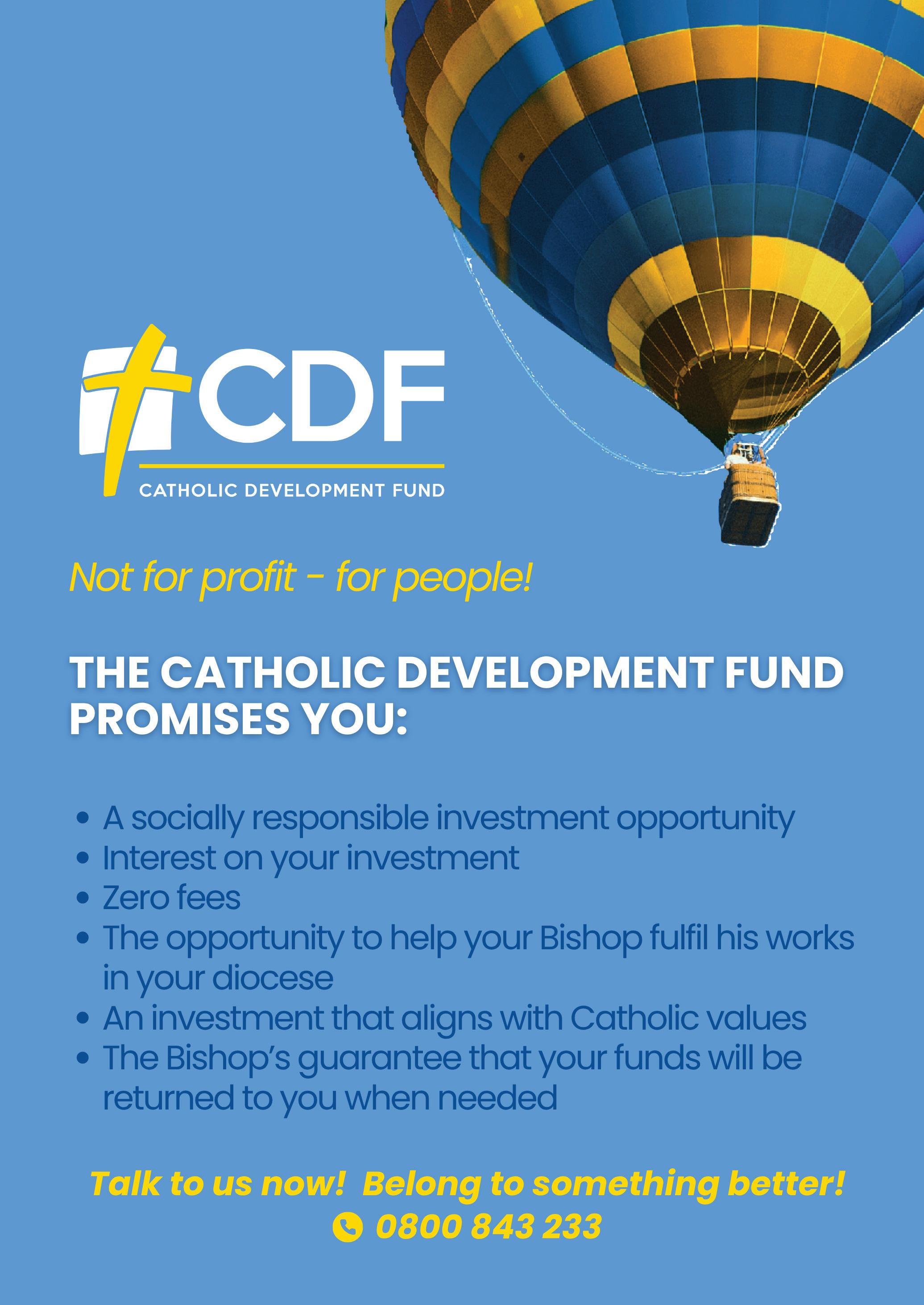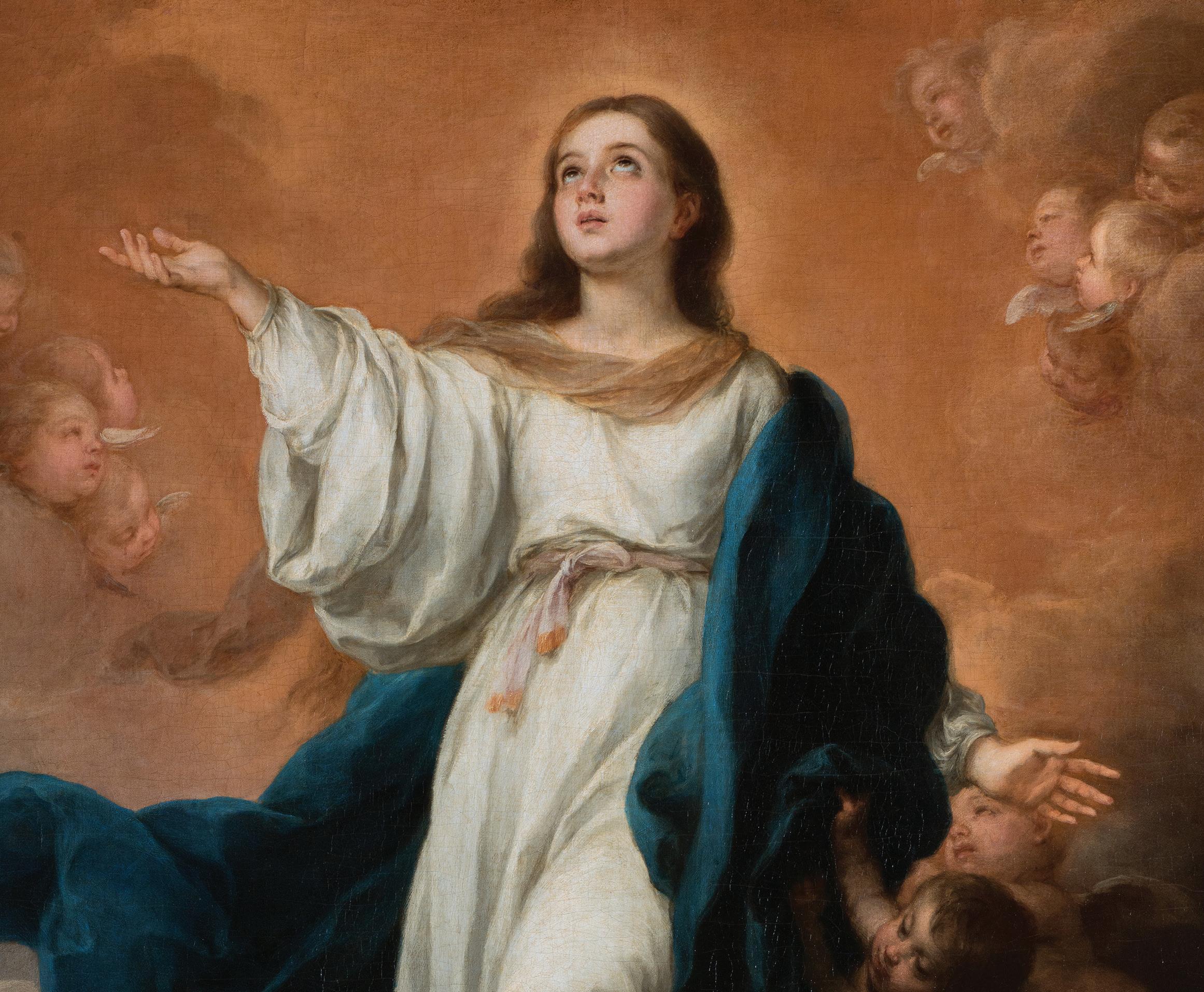
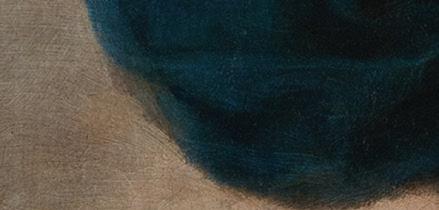
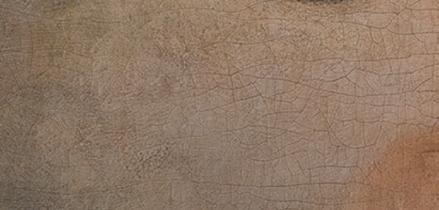
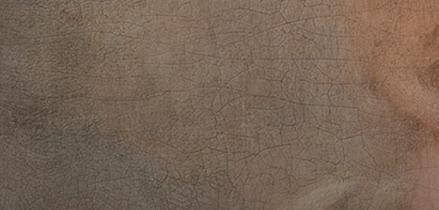
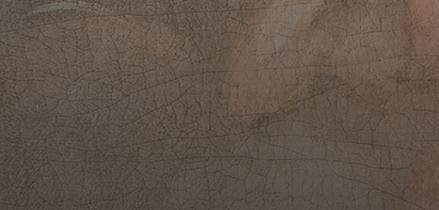



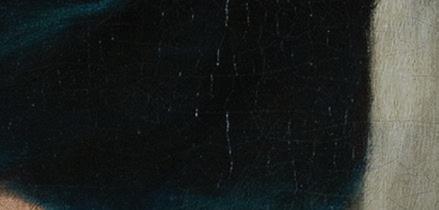
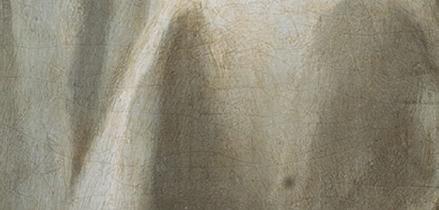
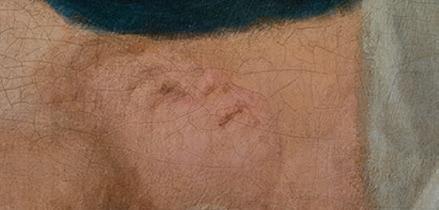
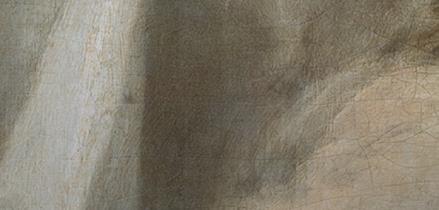
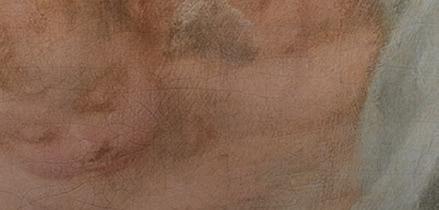
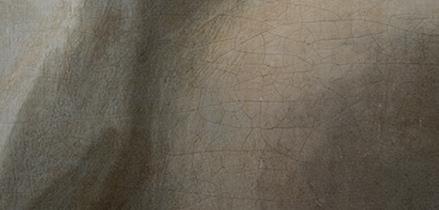
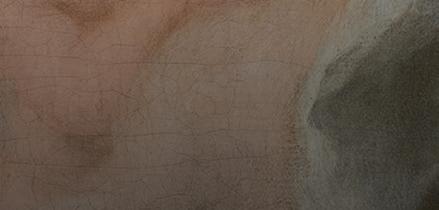
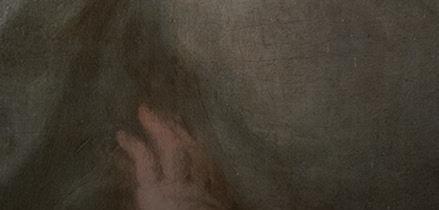

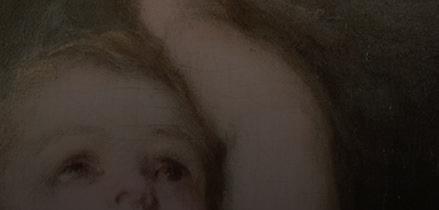
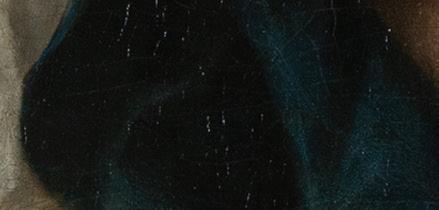
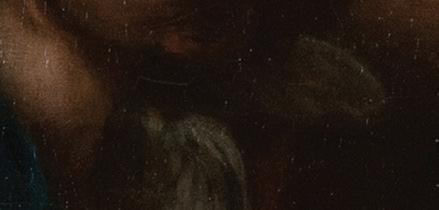
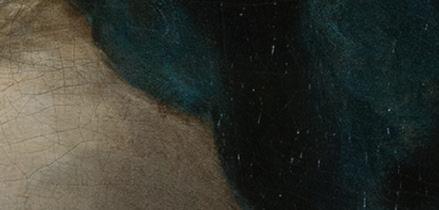

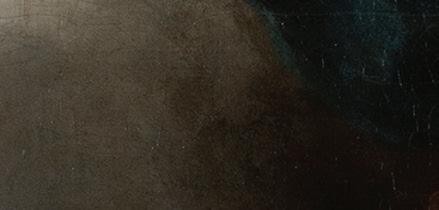

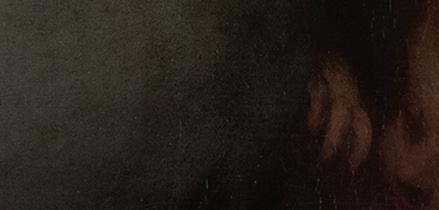































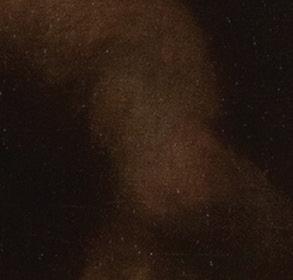


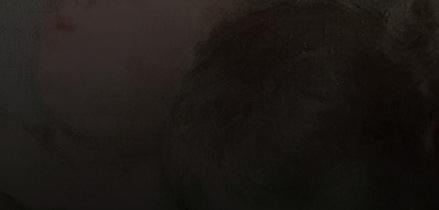



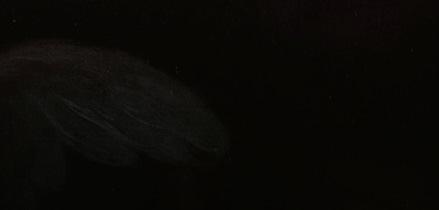



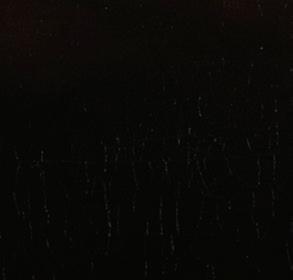



The Feast of the Assumption is deeply significant to the Church in New Zealand.
Bishop Pompallier, at his first Mass on New Zealand soil, dedicated New Zealand to the Patronage of Our Lady Assumed into Heaven. This was 122 years before the Dogmatic and Infallible Declaration by Pius XII in 1950. This feast day on August 15, dates back as far as we have Liturgical Books mentioning special days in the Life of the Church. The earliest mention in writing dates from 377.
In our deeply rationalistic and skeptical society, our very reasonable belief in the power of God often sticks in
the throat of scoffers and unbelievers. According to their narrow minds the God, who created all things — things we understand and those we don’t, who has infinite power over life and death, was incapable of saving his mother from sin — before she fell, and was incapable of uniting her soul and body in heaven, before doing the same thing for St Peter, or for you and me. That objection looks more like a jealous “not fair” than anything else.
Instead a fully generous response to God’s Love could be ours alongside our Eastern brothers and sisters.
All of us, bless thee, O Virgin Theotokos; for Christ our God, Who is infinite, was well-pleased to be contained within you. Blessed are we to enjoy your intercession; for you pray for us day and night, and by your supplications the sceptres of kingdoms are made steadfast. Wherefore, chanting, we cry aloud to thee: Rejoice, O thou who art full of grace! The Lord is with thee! (Matins, August 15 Byzantium Liturgy)
After the disaster of the World Wars, while the Korean Conflict was raging, and in the face of rising rejection of God, Truth and morality, Pope Pius XII, on November 1, 1950, formally defined the dogma of the Assumption of the Blessed Virgin Mary. The Pope saw the Assumption of Mary as a beacon of hope, a reminder of the ultimate destiny that awaits the faithful. The document carefully lays out the theological groundwork for the dogma, emphasising the unique and intimate connection between Mary and her divine Son, Jesus Christ. The Pope cannot create a new belief, but he can give the most secure and clear recognition of the faith held by the Christian faithful for centuries. That is: Mary, “having completed the course of her earthly life, was assumed body and soul into heavenly glory.”
A central pillar of the argument is the link between Mary’s Immaculate Conception and her Assumption. The Incorrupt Ark of the New Covenant, preserved by Grace, pierced by Sorrow, united with her Son in His Death, remains incorrupt even after death, and has already received the reward that awaits us at the end of time. From the earliest centuries, believers spoke of Mary’s special place in salvation history. They referred to her as the “new Eve,” who, in her obedience, reversed the disobedience of the first Eve. Her role as the loving associate of the Redeemer in his life and work meant that she should also share in the fullness of his glorification. The belief in Mary’s bodily Assumption was not an invention of theologians but a consistent and deeply held conviction of the Christian people, expressed through ancient liturgical feasts in both the Eastern and Western Churches. The numerous petitions and studies submitted to the Holy See over the years, calling for the dogma to be defined, were a powerful testament to this universal faith.
“By the authority of our Lord Jesus Christ, of the Blessed Apostles Peter and Paul, and by our own authority, we pronounce, declare, and define it to be a divinely revealed dogma: that the Immaculate Mother of God, the ever Virgin Mary, having completed the course of her earthly life, was assumed body and soul into heavenly glory.” - POPE PIUS XII
August 15 the Bishops of New Zealand gather at the New National Shrine of Our Lady, in Wellington, to celebrate this feast as part of our Jubilee Celebrations. I ask that you join us in prayer throughout this month; That Mary Mother of God, and our Mother, the Queen of Heaven, and our Queen, the bearer of our Hope and our Salvation, may pray to God for us, that we may be made worthy of the promises of Christ.
I have taken the liberty of summarising the Dogmatic Constitution for your reading. Any mistakes are all mine. A free and total read can be found on the Vatican Website. Just ‘Google’ the Dogma of the Assumption - Vatican and you should find it to read.


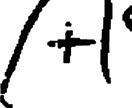



BISHOP’S LETTER
EDITOR’S NOTE
RICHARD’S DIGEST
As our last Kete landed in parishes, we came to learn of the passing of our beloved Pope Francis. This was followed by chimney watching and white smoke celebrationsHabemus Papam! With joy we celebrated our new Holy Father, Pope Leo XIV.
Our Assumption issue has plenty to reflect on, including a ‘Richard’s Digest’ on this Dogma. Our BBQ trailer - an exciting initiative born to the Jubilee year is featured in one of our articles, to book - head to cdh.org.nz/bbq. Fr Prakash united us all together for a joyous Pentecost celebration in Rotorua, an outpouring of the Holy Spirit was felt by all. Be inspired by stories of faith, like a family’s journey to Catholicism, and learn about faith in action through the vital work of the Mission Sisters. In the days following the passing of Monsignor Joe Stack, cherished memories were shared far and wide. Reading your comments on social media, of the ‘sunshine priest’ really did brighten our day!
We pray you enjoy this edition of the Kete Kōrero, and may it inspire you as we continue to be Pilgrims of Hope.



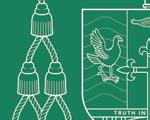
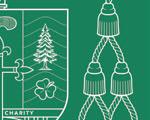


Publisher: Catholic Diocese of Hamilton
Editor: Kirsty Muir | kirstym@cdh.org.nz
Design & Photography: Taila Burton-Gollop
Proofreader: Patricia Parsons
Advertising: kete@cdh.org.nz
Sign up for more Kete online news: ketekorero.cdh.nz
Phone: 07 856 6989
Postal: PO Box 4353, Hamilton East 3247
ISSN number: 2357-2221



Deadline for content: 7th November 2025 @catholicdioceseofhamilton youtube.com/CatholicDioceseofHamiltonNZ
COVER: Bartolomé Esteban Murillo, Walpole Immaculate Conception, circa 1680, oil on canvas, Wikimedia Commons.
November 1, 1950
1. God, in His loving providence, balances the sorrows of life with joys to bring good to those who love Him. (Rom 8:28)
2. Despite widespread troubles, —war, abandonment of truth and virtue— the Church finds consolation in the growing devotion to the Virgin Mary and her maternal care.
3. God’s plan granted Mary a perfect harmony of graces, now especially evident in the clearer recognition of her bodily Assumption.
4. That privilege shone forth in new radiance since the proclamation of the Immaculate Conception. We believe Christ overcame sin and death by his own death. The baptised are born again, and have conquered sin and death through the same Christ. Yet, on average, God still wills the just, the Elect still fell the effect of the corruption of the grave, and only on the last day will they be joined, each to its own glorious soul.
5. However, God has willed that the Blessed Virgin Mary should be exempted from this general rule. She, by an entirely unique privilege, completely overcame sin by her Immaculate Conception, and as a result she was not subject to the law of remaining in the corruption of the grave, and she did not have to wait until the end of time for the redemption of her body.
6. The dogma of the Immaculate Conception sparked hope among the faithful for the definition of Mary’s Assumption.
7. Many Catholics, including Church leaders, fervently petitioned the Holy See to define the Assumption as dogma.
8. These petitions increased over time, supported by theological study, Marian congresses, and prayer campaigns affirming the Assumption as a truth of faith.
9. Pius XII found thousands of petitions on his desk from all over the world and from every class of people, including Cardinals and bishops, urging the definition of the Assumption.
10. The Pope ordered further study and careful collection of all petitions related to the Assumption.
11. In 1946, the Pope asked bishops worldwide if they judged the Assumption definable as dogma and whether they and their flocks desired it.
12. The nearly unanimous affirmative response of the bishops confirmed that the Assumption is a revealed
truth to be believed by all the faithful.
13. Evidence of belief in the Assumption can be found throughout Church history and becomes clearer over time.
14. The faithful have long believed, in the light of Scripture, that the Virgin Mary led a life troubled by cares, hardships, and sorrows, and that Simeon’s prophecy came to pass. A terribly sharp sword pierced her heart as she stood under the cross of her divine Son, our Redeemer. In the same way, it is difficult to admit that the great Mother of God, like her Son, had actually died, and that her sacred body had never been subject to the corruption of the tomb, and that the august tabernacle of the Divine Word had never been reduced to dust and ashes.
15. Churches, sacred images, and religious orders all testify to widespread belief in the Assumption.
16. The Assumption has been celebrated liturgically in both East and West since ancient times, confirming its deep roots in Church tradition.
17. Ancient liturgical texts affirm that Mary’s death did not result in bodily corruption, in keeping with her dignity. “Venerable to us, O Lord, is the festivity of this day on which the holy Mother of God suffered temporal death, but still could not be kept down by the bonds of death, who has begotten your Son our Lord incarnate from herself.”(c780ad)
18. Other liturgies, like the Gallican and Byzantine, describe the Assumption as a unique and divinely granted mystery. “God, the King of the universe, has granted you favors that surpass nature. As he kept you a virgin in childbirth, thus he has kept your body incorrupt in the tomb and has glorified it by his divine act of transferring it from the tomb.” (Byzantine Festal Menaion)
19. Popes past have elevated the liturgical status of the Assumption feast, encouraging deeper appreciation of the mystery.
20. Preachers and Fathers used the liturgy to further explain the Assumption as a long-held and well-understood truth.
21. St. John Damascene argued that Mary’s privileges made it fitting that she not undergo bodily decay.
22. Other early Fathers and writers similarly affirmed that Mary’s incorrupt body was glorified in heaven. E.g., St. Modestus of Jerusalem c.630.
23. As devotion to the feast spread, more bishops and
preachers explained the Assumption’s connection to revealed truths.
24. Scholastic theologians affirmed the Assumption’s harmony with Scripture and divine revelation.
25. These theologians reasoned that Christ, out of love and reverence, would glorify His Mother in body and soul.
26. Theologians and preachers have often used events and expressions from Sacred Scripture, such as the Ark of the Covenant and the Queen entering the royal halls of heaven, to explain their belief in the Assumption.
27. The woman clothed with the sun in Revelation was also seen as a symbolic affirmation of the Assumption. The Angelic greeting “Hail, Full of Grace” is fulfilled by the assumption, the removal of the curse upon Eve.
28. Early scholastics like Amadeus believed Mary’s incorrupt body was reunited with her soul in heavenly glory.
29. St. Anthony of Padua taught clearly that Mary’s body, like Christ’s, was assumed and glorified.
30. St. Albert the Great gathered scriptural and theological evidence to affirm the Assumption as a true belief.
31. St. Thomas Aquinas, though not treating the subject directly, upheld belief in Mary’s bodily Assumption.
32. St. Bonaventure reasoned that Mary’s beatitude required her presence in both body and soul in heaven.
33. St. Bernardine of Siena emphasised that Mary’s glory must mirror that of Christ, and that as no bodily relics exist, confirms her Assumption.
34. St. Robert Bellarmine rejected the idea of Mary’s body decaying, given her role as the holy Mother of God.
35. St. Francis de Sales and St. Alphonsus believed that Christ’s love would naturally include glorifying His Mother in body.
36. Some teachers focused less on arguments and more on the faith of the Church as proof of the Assumption.
37. Scholastic Theologians maintained that divine power and Church faith affirm the Assumption just as with the Immaculate Conception.
38. All these proofs and considerations are based upon the Sacred Writings as their foundation. The loving Mother of God is set before our eyes as most intimately joined to her divine Son and as always sharing his lot. It seems impossible to think of her, who conceived Christ, brought him forth, nursed him with her milk, held him in her arms, and clasped him to her breast, as being apart from him in body, even though not in soul, after this earthly life. Since our Redeemer is the Son of Mary, he could not do otherwise, as the perfect observer of God’s law, than to honor, not only his eternal Father, but also his most beloved Mother. And, since it was within his power to grant her this great honor, to preserve her from the corruption of the tomb, we must believe that he really acted in this way.
39. As the new Eve, sharing in Christ’s redemptive victory, Mary’s glorification completes their shared triumph over death.
40. Mary, united with Christ in predestination and redemption, finally obtained, as the supreme culmination of her privileges, her bodily Assumption to heaven.
41. Since the Church has always believed, celebrated, and taught the Assumption, the time has come to define it as dogma.
42. The definition of the Assumption will glorify God, inspire greater unity and devotion, and affirm the dignity and destiny of the human body.
43. The Holy Year is a fitting moment to crown Mary with this honor and show lasting love for her.
44. Therefore, after we have poured forth prayers of supplication again and again to God, and have invoked the light of the Spirit of Truth, for the glory of Almighty God who has lavished his special affection upon the Virgin Mary, for the honour of her Son, the immortal King of the Ages and the Victor over sin and death, for the increase of the glory of that same august Mother, and for the joy and exultation of the entire Church; by the authority of our Lord Jesus Christ, of the Blessed Apostles Peter and Paul, and by our own authority, we pronounce, declare, and define it to be a divinely revealed dogma: that the Immaculate Mother of God, the ever Virgin Mary, having completed the course of her earthly life, was assumed body and soul into heavenly glory.
45. Anyone who denies or doubts this dogma departs from the Catholic faith.
46. This Apostolic Constitution is to be permanently remembered and accepted by the faithful everywhere.
47. No one may change or oppose this definition under threat of divine judgment.



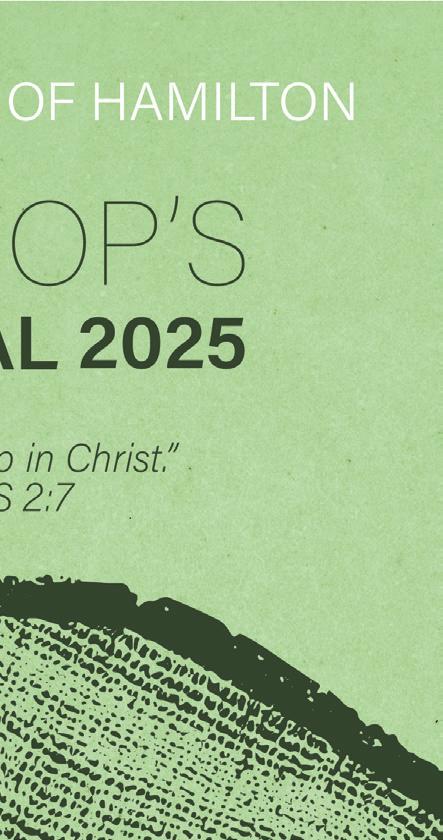

In the heart of Rotorua, something truly unforgettable unfolded on Pentecost Sunday, a celebration that radiated joy, unity, and the unmistakable presence of the Holy Spirit. Our Jubilee Year 2025 celebration wasn’t just an event - it was an outpouring of grace, a living mosaic of cultures and faith, stitched together by the Spirit’s vibrant thread.
FR PRAKASH SOMU AND DAMIAN ROBERTSON
The theme “Pilgrims of Hope – Come, Holy Spirit!” became more than words - it was the spirit of the entire
day.
The Jubilee Year invites us to pause, reflect, and look ahead with faith-filled hope. Here in our corner of Aotearoa, our parish embraced this sacred invitation with open arms. From the earliest conversations, there was a beautiful sense of shared purpose. Parish leaders, volunteers, and faithful hearts from every background came together - not to showcase, but to serve, to celebrate, and to stand as one people of God. What unfolded was nothing short of extraordinary. Cultural communities from across the globe, Pākeha; Māori; Samoan; Tokelauan; Sāmoan; Sri Lankan; Filipino; Indian; Irish; African; Dutch; German; Korean; Mandarin-speaking; Spanish; Tagalog and more, gathered in faith, each offering their own sacred treasures: language, song, dance, and prayer. It wasn’t a show - it was worship in full colour; authentic, reverent and deeply moving.
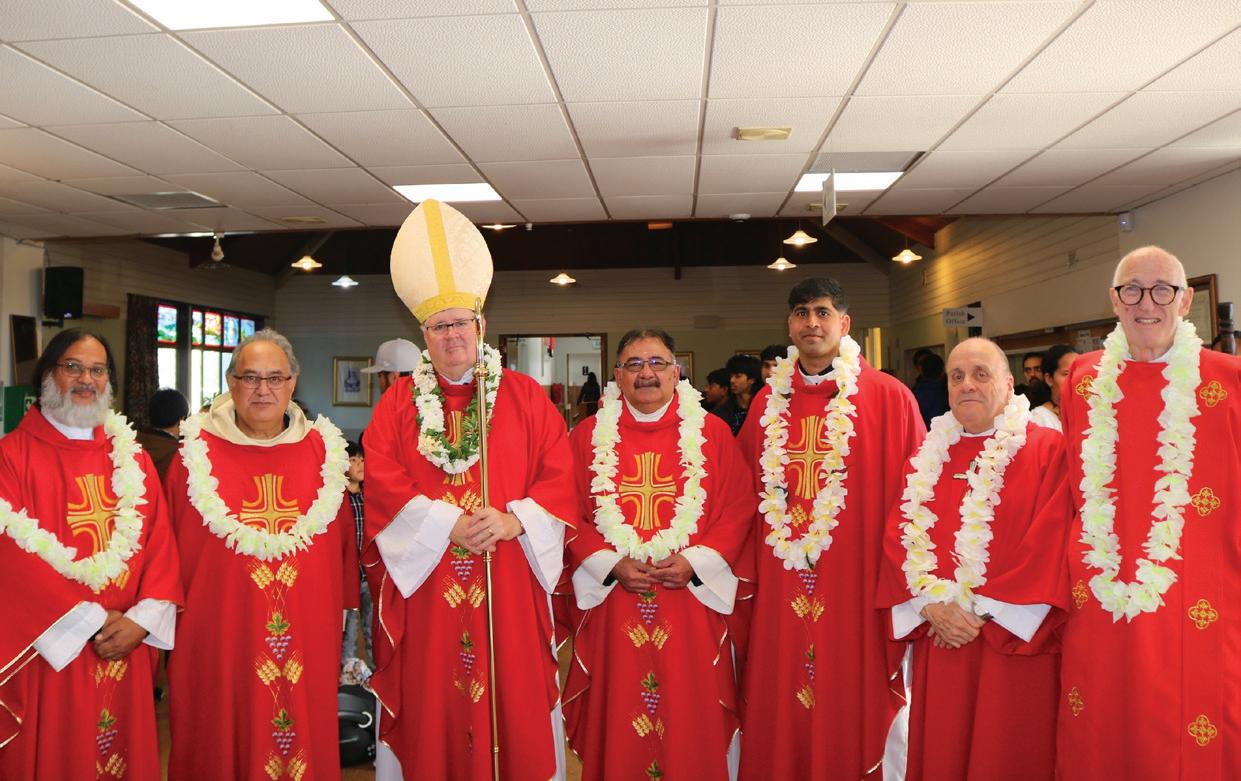




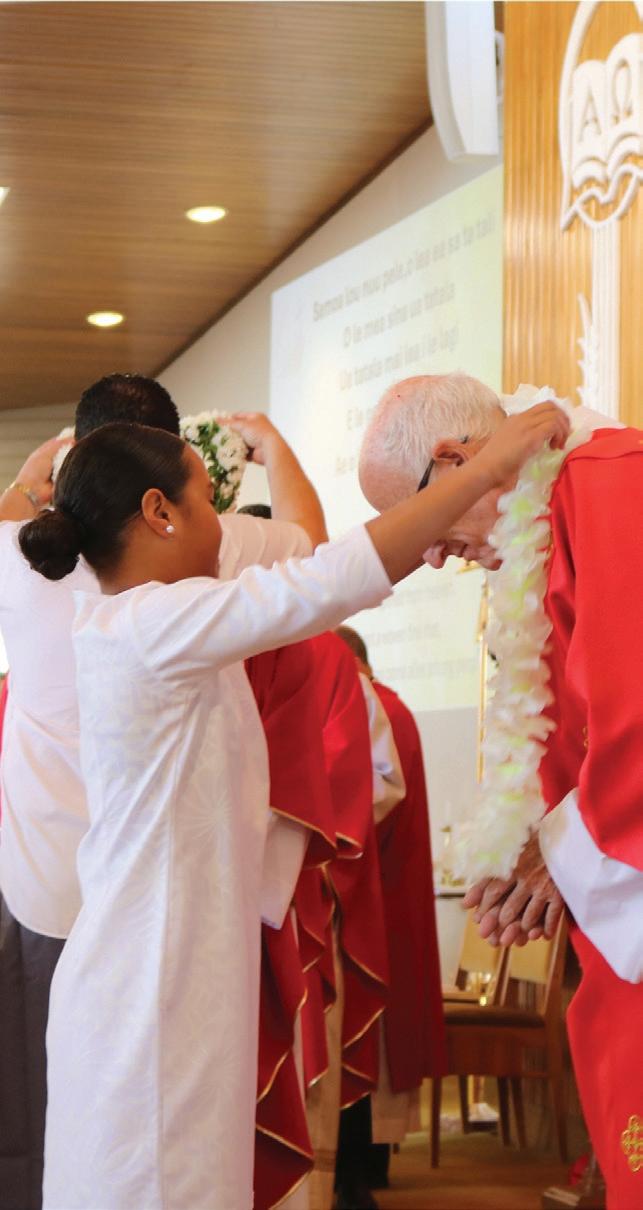
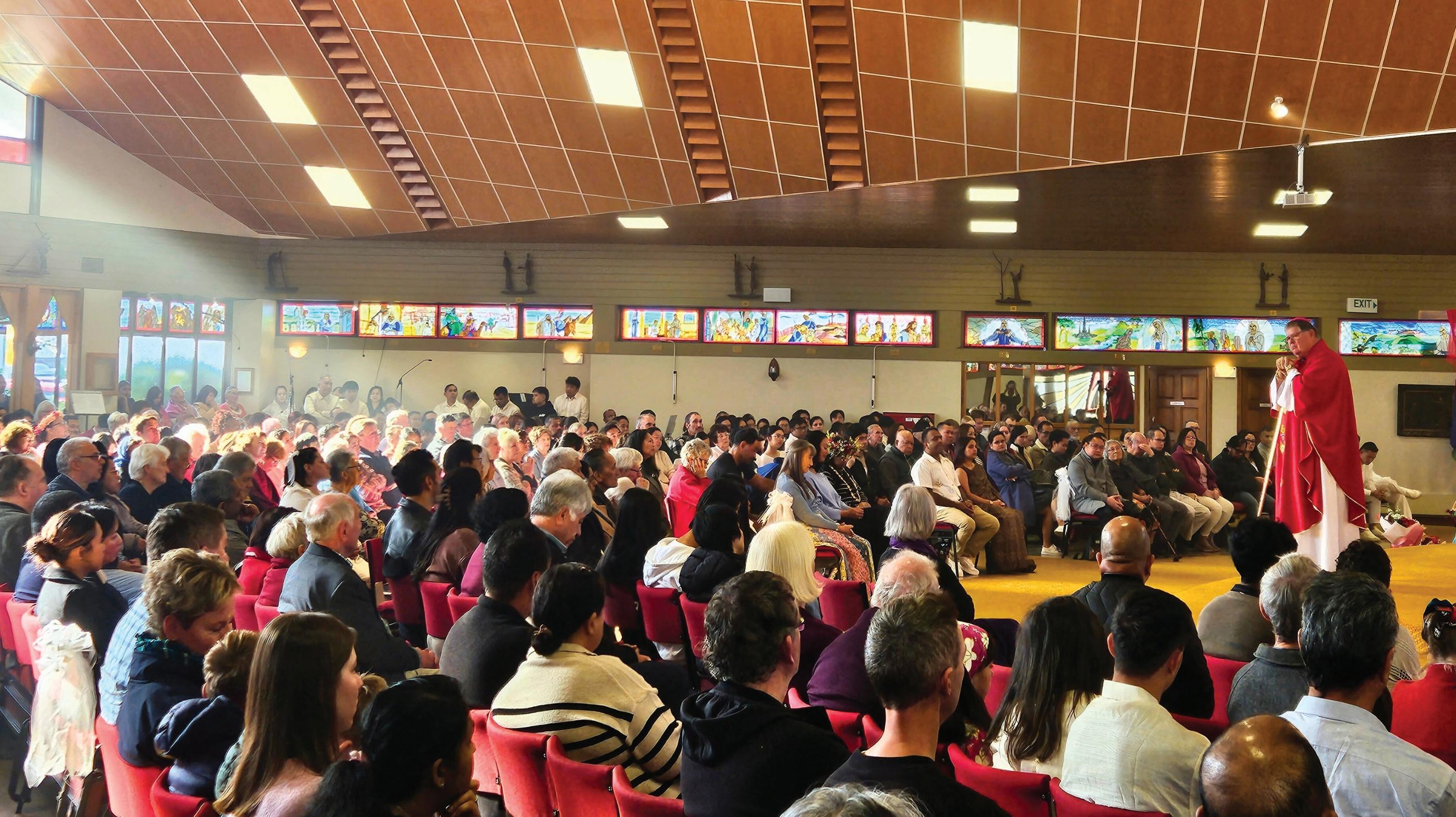
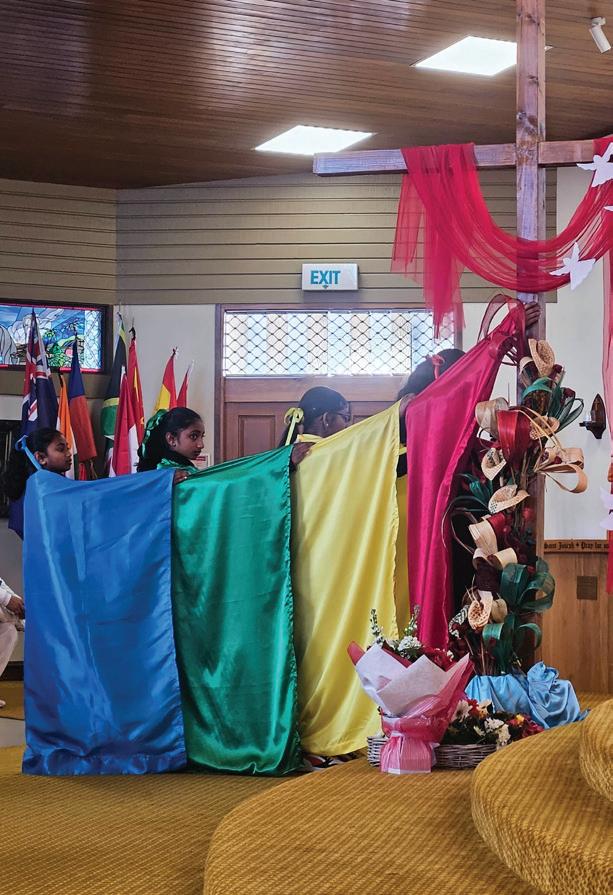
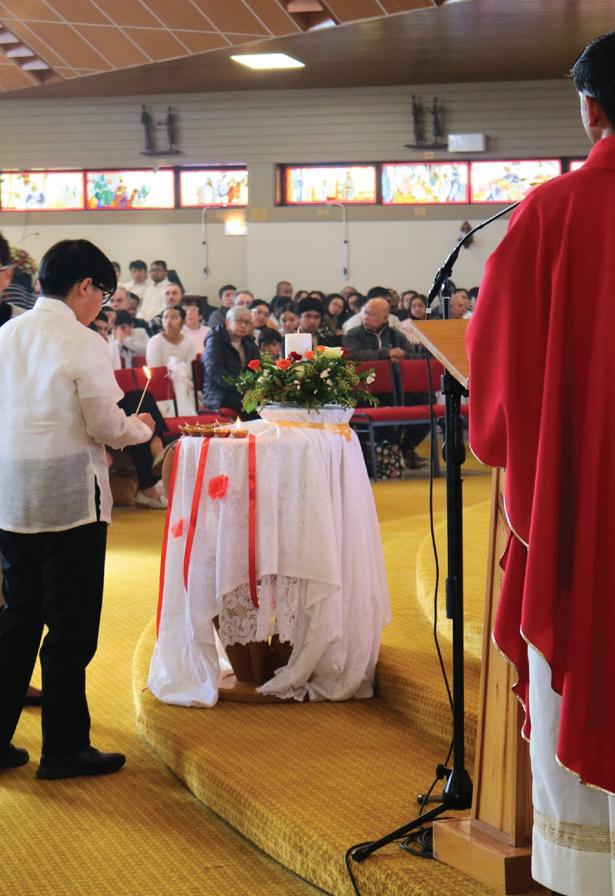


“ ... it echoed the truth of Pentecost: the Holy Spirit speaks every language and calls every nation. In that moment, we saw the Body of Christ in all its glorious diversity.”
One of the most powerful moments came right at the beginning, when Rev. Monsignor Trevor Murray welcomed the congregation and asked, “Who among us was born in New Zealand?” A few hands lifted. “And who was born elsewhere?” he then asked. A sea of hands filled the church. It was a simple gesture, yet it echoed the truth of Pentecost: the Holy Spirit speaks every language and calls every nation. In that moment, we saw the Body of Christ in all its glorious diversity.
We are deeply grateful to Bishop Richard Laurenson and our brother priests and deacons who gathered with us, prayed with us, and joyfully celebrated the Mass. Their presence uplifted us all and reminded us of our connection to the wider diocesan family. The Holy Spirit was surely at work through their gentle leadership and warm-hearted presence.
The liturgy was woven with sacred beauty. The Tokelauan community enthroned the Book of the Gospels with dignity and devotion, lifting the Word of God high, not just in their arms but in their hearts. The Samoan community offered the traditional taualuga, a graceful and joy-filled expression of thanksgiving during the offertory. These and many other cultural contributions gave the liturgy its heart and soul. Inspired by Vatican II, we saw not just diversity, but communion, where culture and Catholic faith meet in harmony like wai (water) flowing from a pure puna (spring).
Our tamariki and rangatahi, our young ones, brought a vibrant energy that lit up the church. From the tiniest voices in the procession to the confident presence of college students, they reminded us that the Church is alive and growing. Young families came with their little ones, creating a joyful hum that filled the sacred space with life.
Their presence was not just cute or endearing, it was sacred, it was the now and the future of our Church.

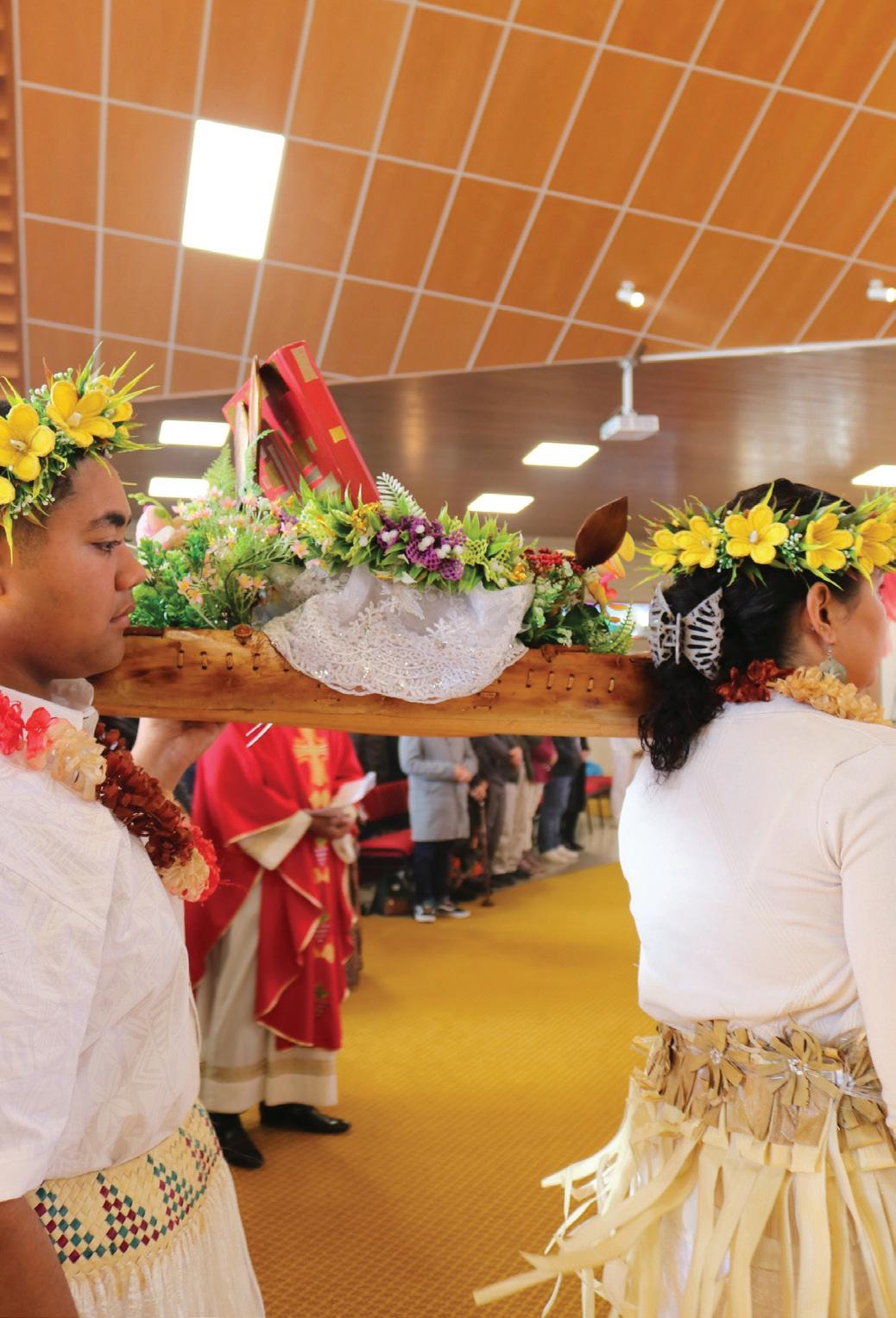
There was something profoundly moving about seeing generations worship together. Elders blessing, children dancing, communities serving shoulder to shoulder. Each person brought their unique gift to the altar of celebration. And through it all, the Holy Spirit gently moved - calling, inspiring, uniting.
We also extend heartfelt thanks to the parishes across the Diocese of Hamilton who travelled to be with us. Your presence made this celebration even more meaningful, reminding us that we journey not as individuals or isolated parishes, but as one united body in Christ. Together, we are indeed Pilgrims of Hope. As a parish community in Rotorua, we can honestly say: we are richly blessed. Blessed to live in this sacred land, blessed to walk with people of many nations, and blessed to belong to a Church that continues to be renewed by the Spirit.

“From the tiniest voices in the procession to the confident presence of college students, they reminded us that the Church is alive and growing.”
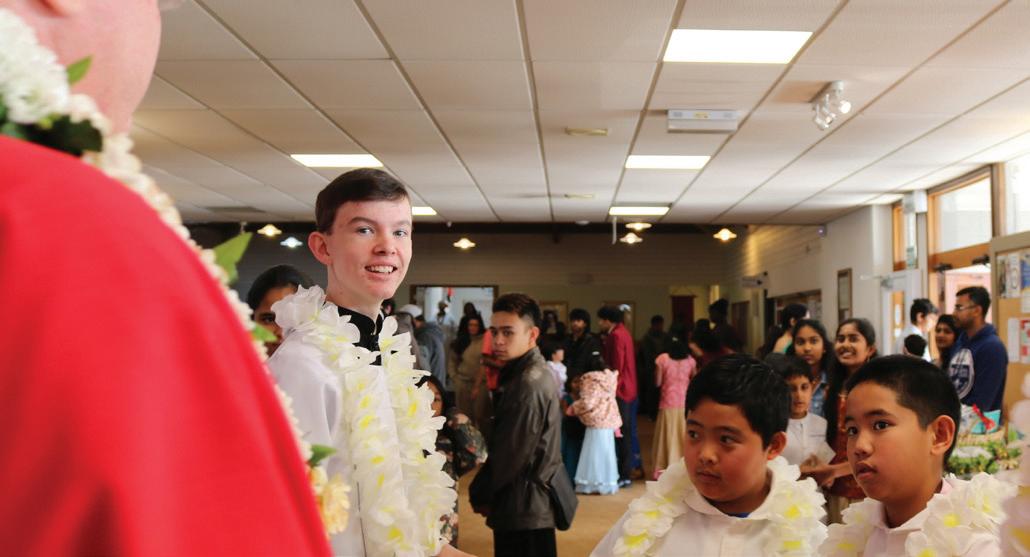
This Jubilee celebration was more than a milestone - it was a Pentecost moment. A moment of grace. A moment of joy. A moment that reminded us who we are: God’s people, full of faith, full of colour, and full of hope. So let us keep journeying together - with aroha in our hearts, the Spirit in our sails, and joy in our step.
To all who made this celebration possible - ngā mihi nui, vinaka vakalevu, fa’afetai lava, maraming salamat, thank you.
May the Holy Spirit continue to guide us as we walk forward together as Pilgrims of Hope.


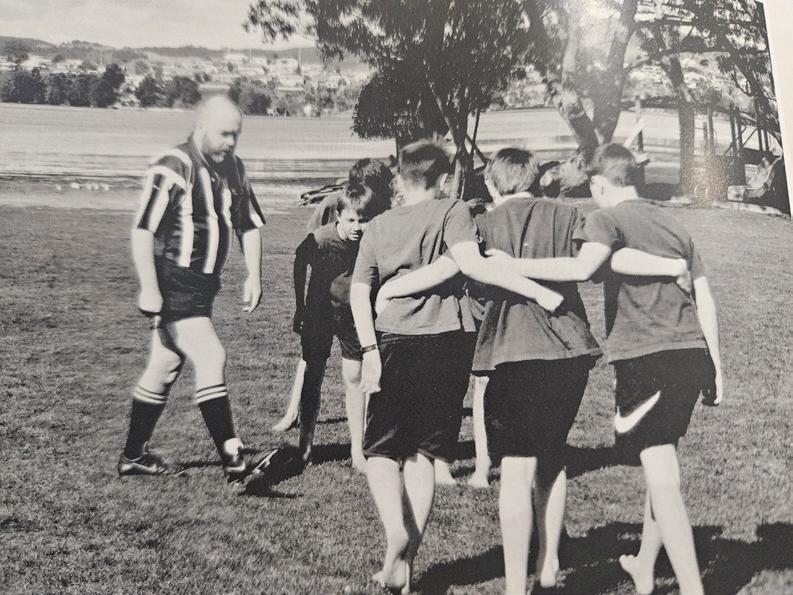
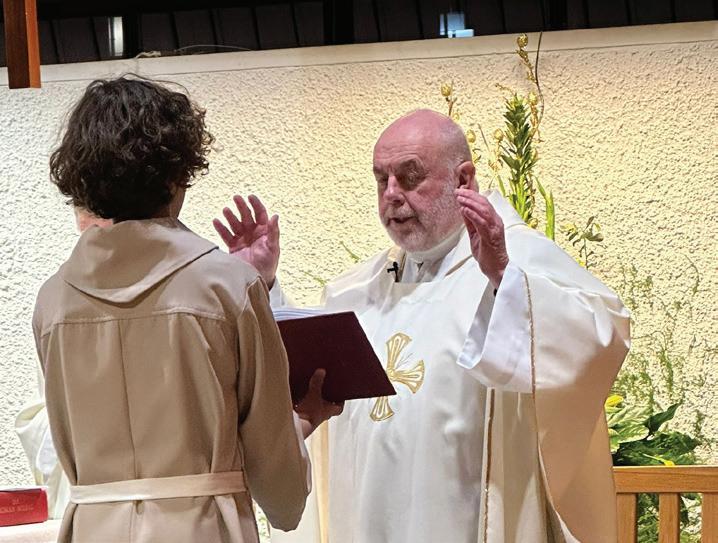


KIRSTY MUIR
Not much more than a year ago, I gave Monsignor Joe an interview list to prompt an article on his 50 years of
priesthood. I came to learn a lot about Mons Joe through the wisdom he shared with me. I was indeed complimented on my patience while waiting on a few reply emails, the humble priest with a fantastic sense of humour never failing to admit he was still working on the right words for his reflection (which almost turned into a memoirs), before signing off with a humorous notation. After his passing, I revisited our emails and felt so grateful to have captured so many of his thoughts on his 50 years in the priesthood. These following words of Mons Joe’s, shared in Bishop Richard’s homily.
‘In thanking God, I am/we are acknowledging the One who is the source of all that is good, the One without whom nothing that is good can happen or be! We are unprofitable slaves - we have done (only) what we ought to have done.”
Monsignor Leonard shared a beautiful memorial at the beginning of both the Thursday Funeral Mass and Friday’s Requiem for his close friend. With the rain belting down on Friday, one small addition to be added, he opened with the reminder that Monsignor Joe had a great sense of humor and would have been the first to comment on the humorous parallel of the fourth verse of the opening hymn - ‘God has watered our barren land, and spent his merciful rain …’
The following is the rest of his memorial.
Joseph Damien Stack, born 26 Nov 1948, beloved son of Betty and Richard Stack, grew up in Ellerslie and attended the convent there. He later attended Marcellin College for his secondary education, becoming a Head Prefect. In 1967 he entered Holy Name Seminary Christchurch, continuing on to Holy Cross College, Mosigel in 1970.
He was ordained to the priesthood in Auckland on the 11th of May 1974, his first appointment as assistant priest in the newly formed parish of St Mark’s Pakuranga.
In 1980 the Diocese of Hamilton was established, and Joe was a founding priest of this new diocese. He served in Waihi, Whakatane, Gisborne, Tauranga and Te Awamutu. In the early years he was involved in youth ministry, and for a time he was Chaplain of the Catholic Women’s League, he was also a member of the Justice and Peace Commission.
Joe was on the priest council, later a member of the College of Consultors, and for a number of years, Director of Vocations.
He has been described as the sunshine priest, a man for the time, a community builder, a wise counsellor, a man without guile. Monsignor Leonard likened him to an oyster, in that beyond that hard outer shell, a pearl was discovered in the quiet unassuming manner of the man.
A man of compassion, his understanding of human frailty and his willingness to give people every possible chance to participate in the life of the Church. This enabled a new hope given to people whose faith may have been wounded

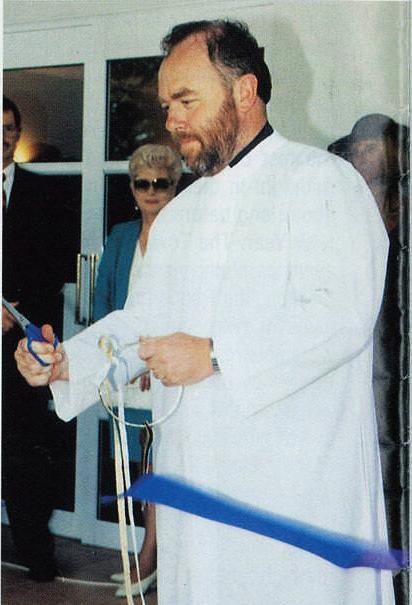
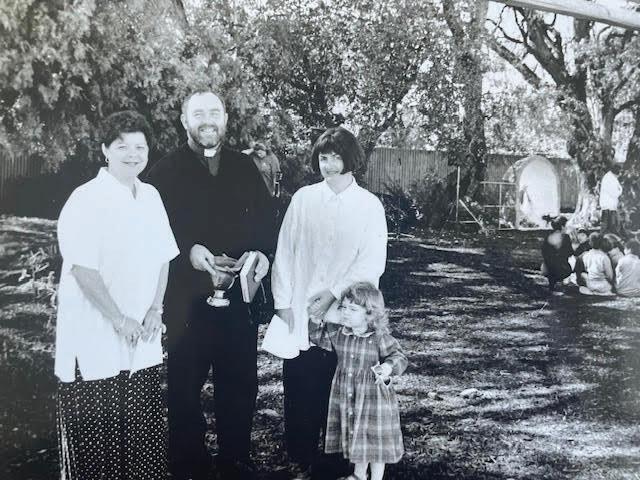
BORN:
26 NOVEMBER, 1948 ELLERSLIE



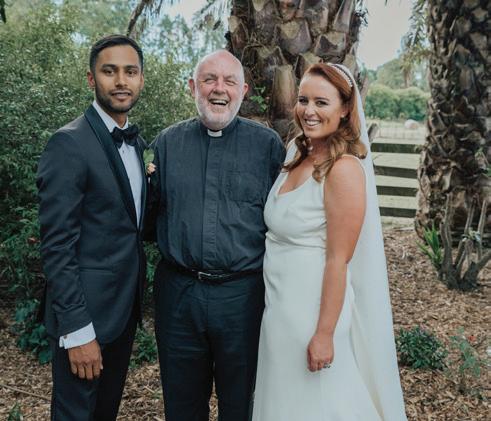
ORDAINED TO THE PRIESTHOOD:
11 MAY, 1974 AUCKLAND
ENTERED SEMINARY:
1967 - HOLY NAME, CHRISTCHURCH
1970 - HOLY CROSS COLLEGE, MOSGIEL
or lost. He encouraged them to cling on, and helped them to heal. He met people where they were, not as we or society might expect them to be. He had a passion for Social Justice and a direct involvement in restorative justice initiatives. He had a deep respect for each person and ability to see the best in every one.
The Ecumencial spirit in Joe spurned an outreach to other Christians in various parishes he served in. Archbishop Moxon shared words of Joe being a faithful friend of Paora Tapu.
He was all things sport, a great wordsmith - always looking for the right word for homilies (even often seen last minute before Mass with small pieces of paper in case he thought of a better word.) Widely read, he could lose himself for hours in a bookshop, a quick pop in was never a quick pop in. A little reserved, thoughtful, scholarly and tactful. Had even been described as cautiously liberal. He had a great sense of humour and infectious zeal for life.
Timothy Radcliff, a Dominican Friar, once said we can only be credible bearers of the Good News if we are fundamentally joyful, well Joe had a sense of humor that was sometimes impish, you only needed to be present at a sprinkling rite to know this. He brought his own special characteristics to the liturgy, he exemplified the true Shepherd by taking on the smell of the sheep. Not a man of the clock - time often got away on him, he was never eager to run off as was fixated on the task of the moment.
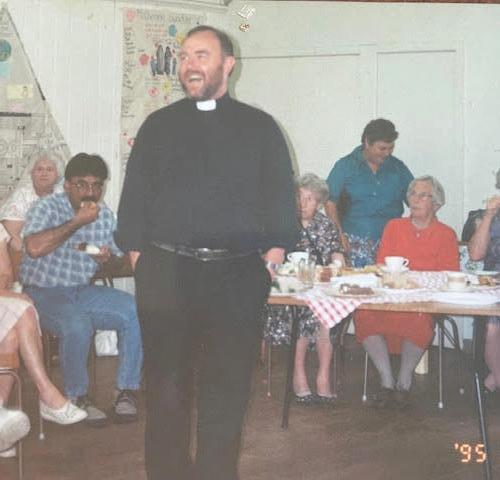
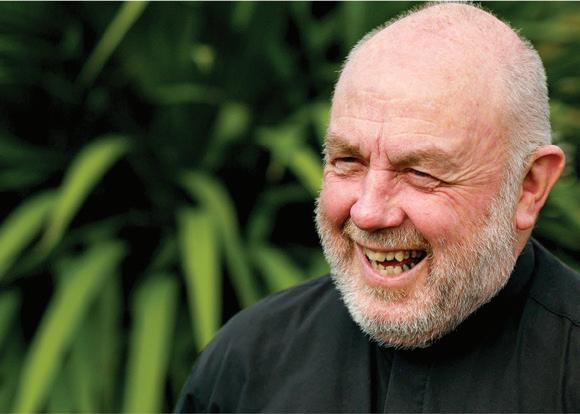

MONSIGNOR:
CONFERRED THE TITLE OF MONSIGNOR BY POPE FRANCIS, NOVEMBER, 2022
HAMILTON DIOCESE: FOUNDING PRIEST FOR THIS NEW DIOCESE, 1980
DEATH: 18 JUNE, 2025
We deeply appreciated his friendship, wisdom, compassion, honesty, his listening ear and his sense of humor. We will deeply miss him.
Farewell dear friend and faithful priest, may you be welcomed by the Lord who you served so faithfully, into the joys of heaven and now rest in peace forever.
As Monsignor Leonard concluded for us, we also now invite you, to remember your own memories of this faithful servant of the Lord.
One of the last texts I sent Monsignor Joe, was asking for an approval on the dedicated Vocations page for the diocese. Vocations were a real passion of his, and in 2020 he wrote the following for our seminary appeal. The words he penned, now shared from his eternal rest, serve as a powerful and lasting testament to that passion. So …. pray for Vocations!
“Not that it matters too much when you are reading this, as long as it encourages you to pray urgently, earnestly, unremittingly for vocations to the ministerial priesthood; especially, but not only, for our Diocese of Hamilton. You may also have an opportunity, through the guidance of the Holy Spirit, to talk to a (young) man and ask him a question. The question you would ask is, “Are you listening?” Not to you, but to the voice of God.”


On celebrating 25 Years - Christina Reymer
It’s no coincidence that Jubilee Catholic Early Childhood Centre celebrates 25 years in this Jubilee year of 2025 - it gets its name from having been established in the Jubilee year of 2000. It began as a community-based playgroup in the building in Clyde St, adjacent to Marian School, which was subsequently renovated to be registered as a fully licenced community-based early childhood centre in 2002, the first Catholic Preschool in the Diocese of Hamilton, under the auspices of the Bishop Denis Browne. “A key feature of the vision,” says Christina Reymer, instigator of the first centre, in Hamilton East, “is that these centres provide an opportunity for whānau to experience faith based learning. All are welcome regardless of their background, they are only asked for their consent for their child to participate in our Catholic rituals and practices. Over the years, many tamariki and their whānau have subsequently asked to be baptised and become active members of the faith community.” In some instances, so have staff, who are all very much a part of the Jubilee whānau.
As for the future, more centres are planned where they are deemed sustainable and as funding and viability allow.
In celebrating this Jubilee year, we wish to acknowledge the tireless support of the Jubilee Board of Directors, not least of which is the Board Chair, Mike Hanaray, who has been part of the vision since its inception, and we look forward to the next 25 years filled with the joy of the Spirit who leads us on!
A word from one of our Directors of the Jubilee Early Childhood Limited and Catholic Schools ManagerJohn Coulam
The diocese, through Jubilee Early Childhood Limited, currently operates a Catholic early childhood service out of three licenced early childhood centres, one in Gisborne and two in Hamilton.
The Hamilton centres, Our Place in Frankton and Jubilee in Hamilton East, feed into the two largest Catholic primary schools in the diocese, St Columba in Frankton and Marian School respectively. The Gisborne site is unique in that it is the only area in the diocese where the parish church and the schools are all in close proximity, thus creating a Catholic campus.
The establishment of Catholic Early childhood centres is a tangible way that the church can support the parents as the first educators of their children. For many, the centres are a welcome back and a way of building that important link with the church.
Our centres are staffed by fully qualified teachers, who teach the Catholic version of Te Whāriki, the national
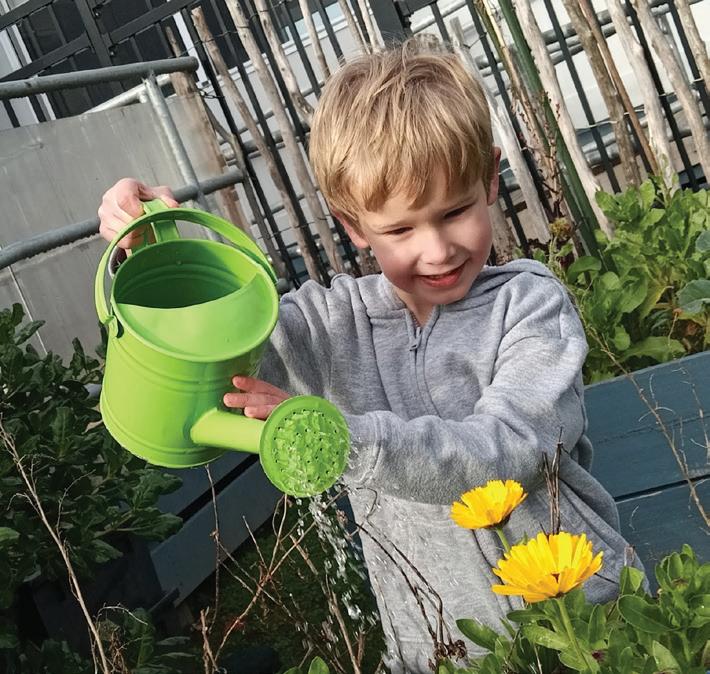


curriculum for early childhood. Our centres are a place where Jesus and the gospel virtues are evident.
STELLA MARIS - Bridget Armstrong
Stella Maris will have been open for 3 years in August 2025, and it has completed this beautiful campus here in Tairawhiti/Gisborne. All in one street, Campion Road we have the church - St Mary, Star of the Sea; Primary school - St Mary’s, College - Campion College and now us!!! Thank you to our Jubilee Board, especially John Coulam for his vision to create Stella Maris. All our whānau and community love the idea of our tamariki starting their

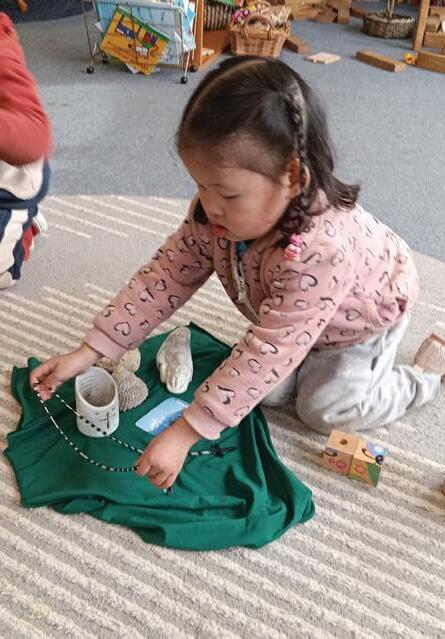

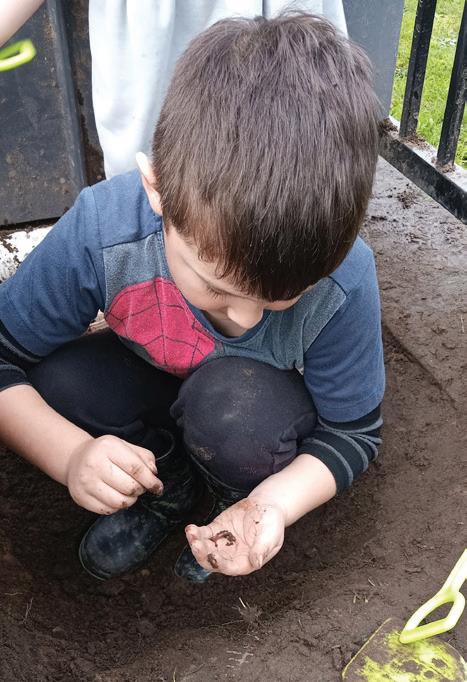
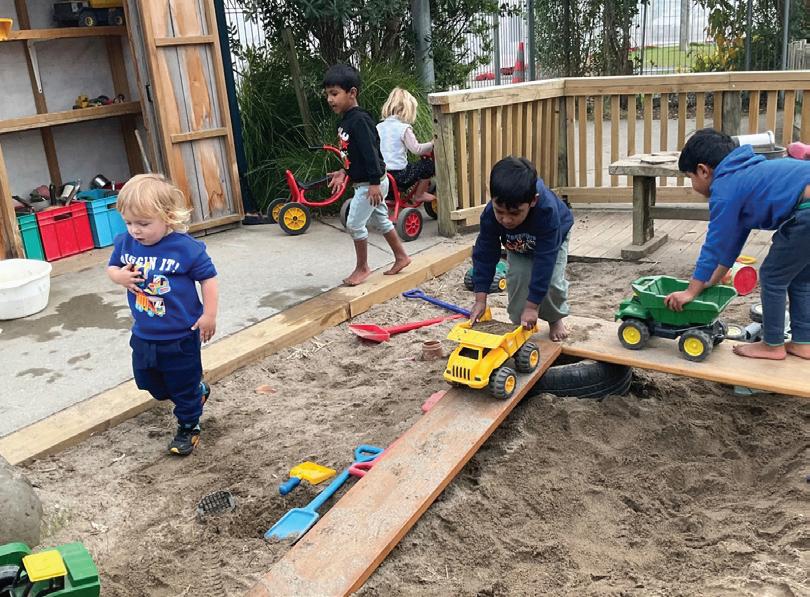

learning journey here with us with then the opportunity for it to continue on to primary then secondary school. This community here is pretty special, all the entities look after each other and we collaborate with one another, creating strong relationships and connections. Our teaching team LOVE having our past tamariki visiting us at the fence to catch up during their play time at St Mary’s, plus we have had Campion students come over and support us with Kapa Haka or share their talent and skills with the tamariki e.g. dance. She’s a real supportive community vibe here, something we are proud of.
Our Place Catholic Preschool is a special centre which doesn’t feel like your run of the mill preschool. It has the privilege of being a mixed age centre, where transitions are based on the readiness of the child and not an arbitrary age deadline. Siblings are able to interact during their day in a cosy homely environment, filled with couches for sprawling on and reading. Faith based learning underpins the heart of all we do, and our close proximity to the neighbouring Catholic Primary School ensures that we are an integral part of the local community.
Our older children get to experience a BushPark programme undertaken in the local park where they are able to fully engage with nature, taking risks and exploring, cooking over a camp stove and relishing in the freedom that comes from being an independent four year old. As a new addition to the whānau of Jubilee Early Childhood we are enjoying being part of a wider Catholic Community, and drawing inspiration from the journey of our sister centres.
Nestled in the heart of Hamilton East, Jubilee is the first Catholic Early Childhood Centre in the Hamilton Diocese. From its beginnings, it has grown into a vibrant community centre for children aged 3 to 5 years. Our experienced teachers are passionate about providing high-quality care and education. Guided by Te Whāriki and enriched with our Catholic Curriculum Statement, we strive to support each child spiritually, emotionally, and physically—helping them discover and develop their unique, God-given potential.
We value our strong ties with Marian Catholic School, Sacred Heart Girls’ College, and the Cathedral of the Blessed Virgin Mary. These connections offer our tamariki meaningful opportunities to engage with the wider faith community—whether through attending Mass, buddy reading, special events with Marian School, or visits from Sacred Heart students.
Jubilee is a place where young children begin their learning journey in a warm, nurturing, and faith- filled environment. We believe Tamariki learn best through their play. Teachers provide an environment that promotes children’s holistic development by providing open-ended resources for exploration. Through a combination of intentional teaching and free play, children are supported in their learning journey.
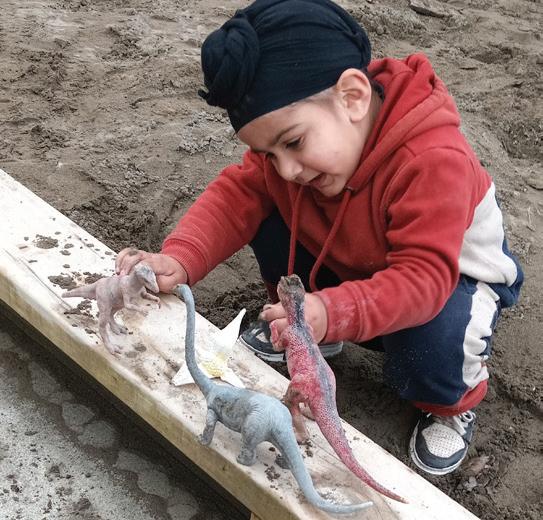




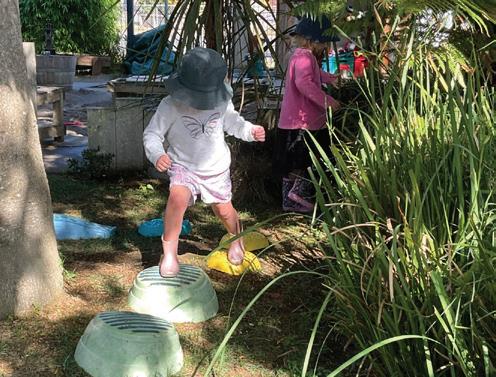
As we celebrate 25 Years we wish to thank all those who have supported Jubilee to become the centre it is today; you are a cherished part of the Jubilee whānau.

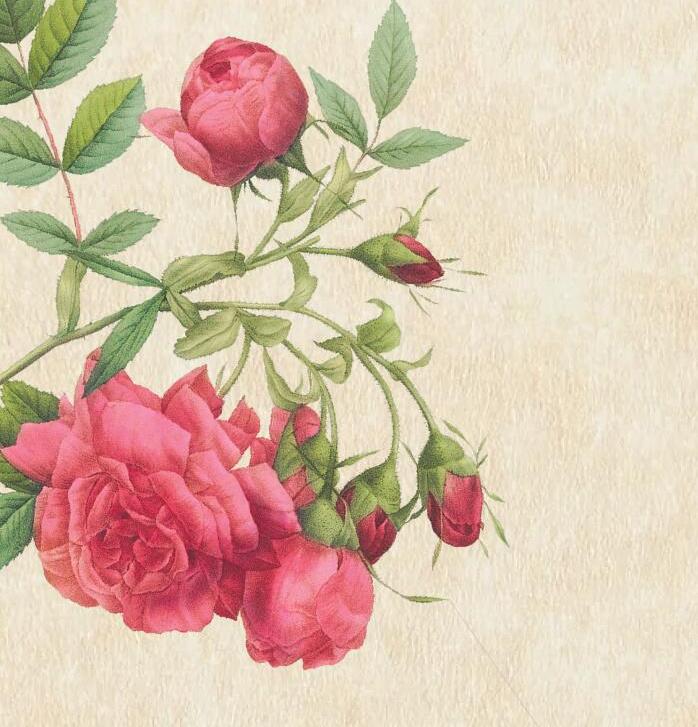

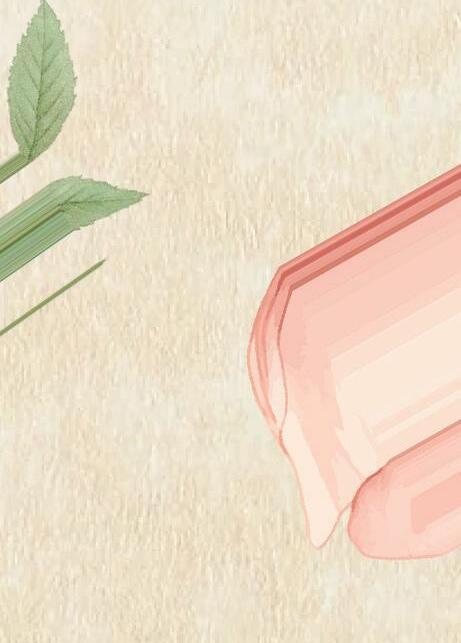



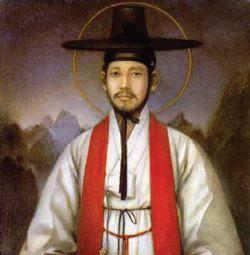
Sept 3rd: St Gregory the Great
Sept 5th: St Teresa of Calcutta
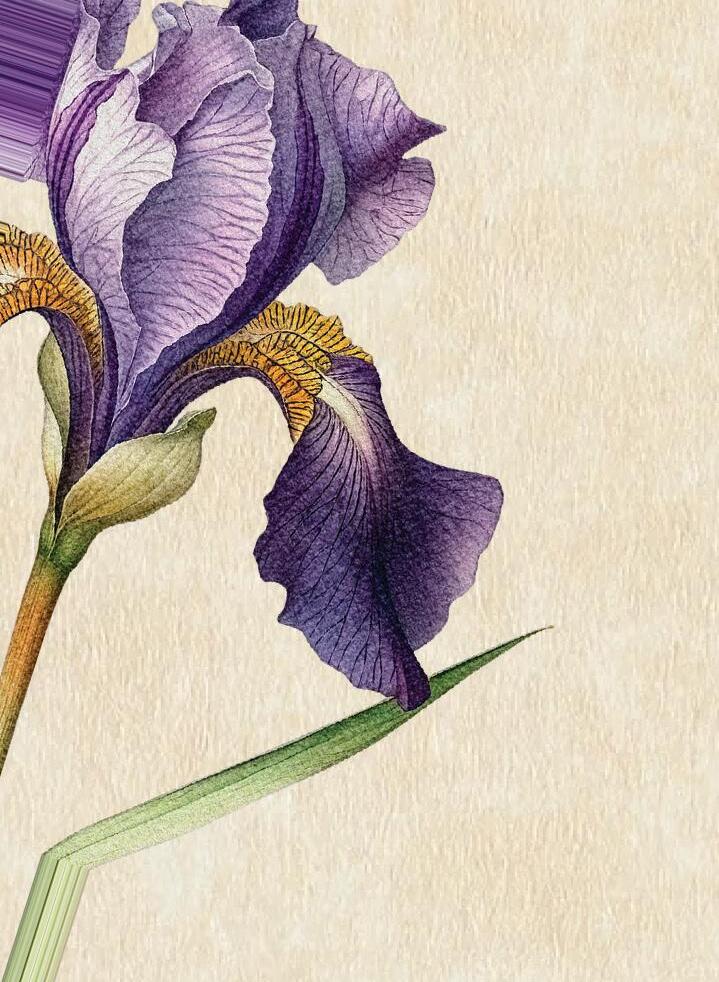
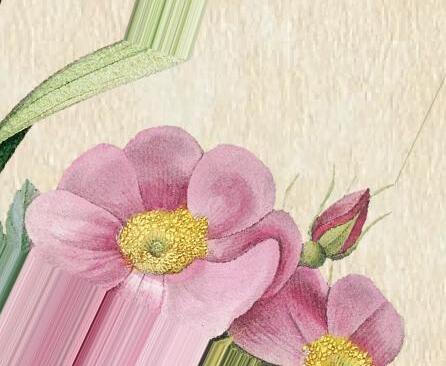


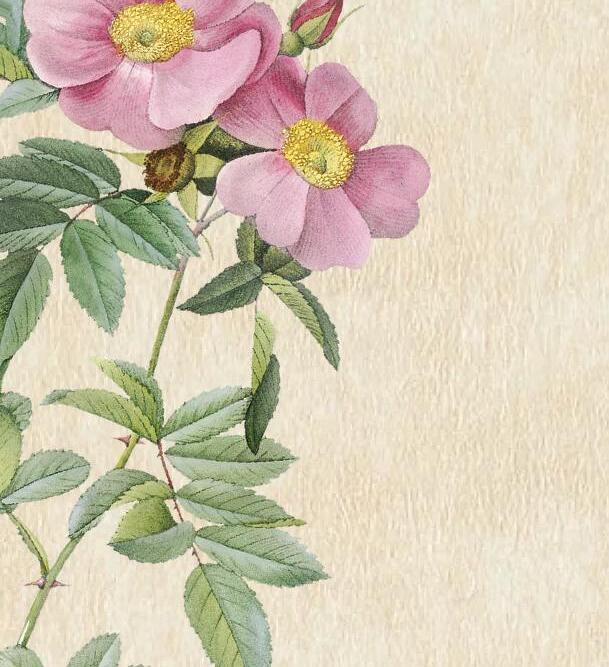




Sept 8th: The Birthday of the Blessed Virgin Mary
Sept 13th: St John Chrysostom
Sept 14th: The Exhaltation of the Holy Cross
Sept 15th: Our Lady of Sorrows
Sept 16th: Sts Cornelius and Cyprian
Sept 20th: Sts Andrew Kim Taegon, and Paul Chong
Hasang, and their Companions
Sept 21st: St Matthew, Apostle and Evangelist
Sept 23rd: St Pius of Pietrelcina (Padre Pio)
Sept 27th: St Vincent de Paul
Sept 29th: Sts Michael, Gabriel and Raphael, Archangels
Sept 30th: St Jerome




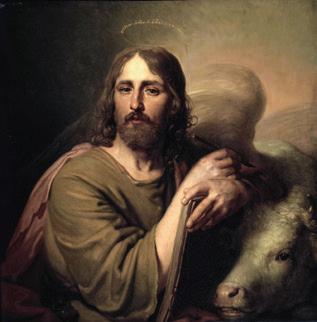
Oct 1st: St Thérèse
Oct 2nd: The Holy Guardian
Oct 4th: St Francis of
Oct 7th: Our Lady of
Oct 9th: St Denis and
Oct 15th: St Teresa
Oct 17th: St Ignatius
Oct 18th: St Luke the
Oct 22nd: St John Paul
Oct 28th: Sts Simon
Teresa of


Saint Pius of Pietrelcina, known as Padre Pio (1887–1968), was an Italian Capuchin friar, priest, and mystic renowned for his piety, charity, and supernatural phenomena. He bore the stigmata—wounds of Christ—for most of his life, attracting widespread attention and pilgrimages. Despite controversy and Vatican scrutiny, his deep devotion to prayer, confession, and the Eucharist inspired many. He founded the “Home for the Relief of Suffering,” a major hospital in Italy. Canonized by Pope John Paul II in 2002, Padre Pio is venerated for his humility, miracles, and profound spiritual insight, remaining one of the most beloved modern Catholic saints.



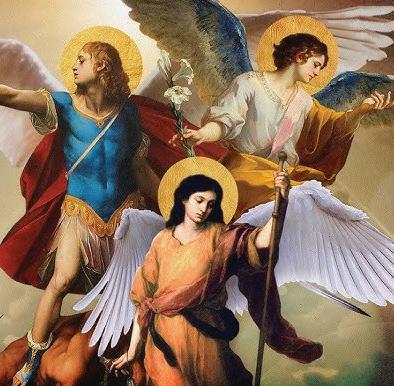
she emphasized contemplative union with God. She Carmelites, promoting and poverty. Teresa was works, including The Way of Perfection, are opposition, she remained and spiritual renewal. declared a Doctor of the is celebrated for her mystical leadership, and lasting spirituality.
*This is not a complete list.


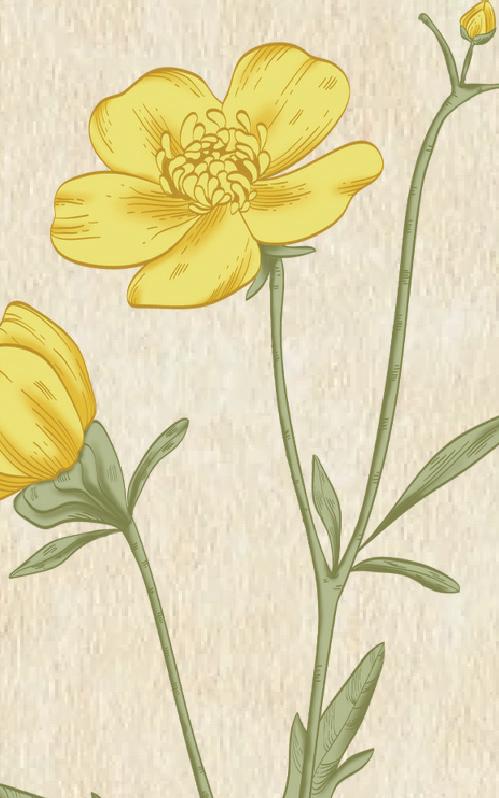
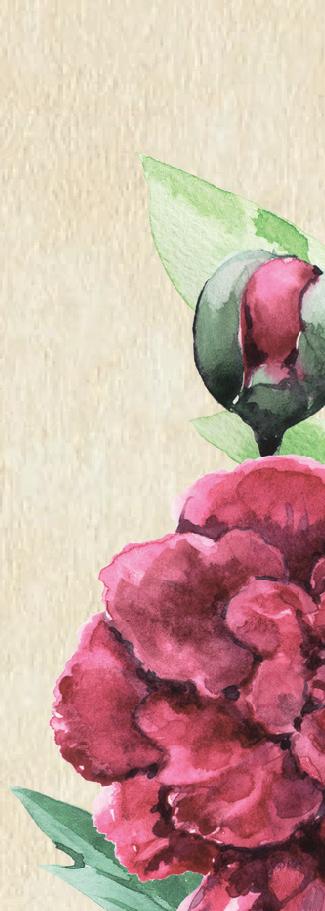
of the Child Jesus Guardian Angels of Assisi of the Rosary and Companions of Ávila Ignatius of Antioch the Evangelist Paul II Simon and Jude, Apostles
Nov 1st: All Saints
Nov 2nd: All Souls
Saint Teresa of Ávila (1515–1582) was a Spanish Carmelite nun, mystic, and reformer of the Carmelite Order. Known for her deep spirituality, contemplative prayer and founded the Discalced a return to simplicity was a prolific writer; her Interior Castle and The spiritual classics. Despite remained devoted to reform Canonized in 1614 and the Church in 1970, Teresa mystical experiences, strong lasting influence on Christian

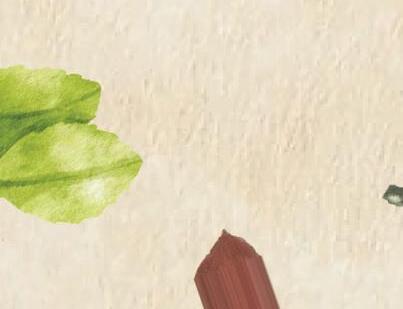
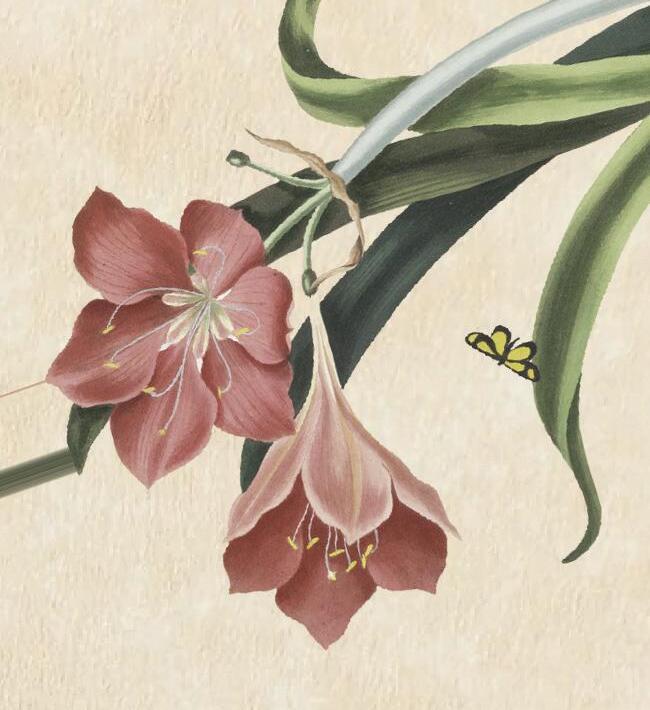
Nov 4th: St Charles Borromeo
Nov 9th: Dedication of the Lateran Basilica
Nov 10th: St Leo the Great
Nov 11th: St Martin of Tours
Nov 12th: St Josaphat
Nov 15th: St Albert the Great
Nov 17th: St Elizabeth of Hungary
Nov 22nd: St Cecilia
Nov 23rd: Christ the King

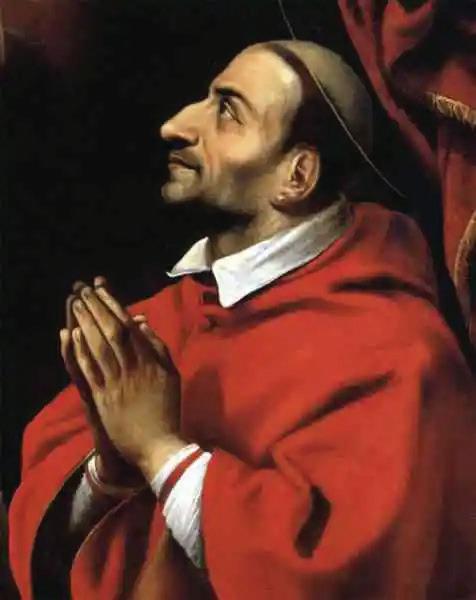
Nov 21st: The Presentation of the Blessed Virgin Mary
Nov 24th: Sts Dũng-Lac and his Companions
Nov 30th: 1st Sunday of Advent
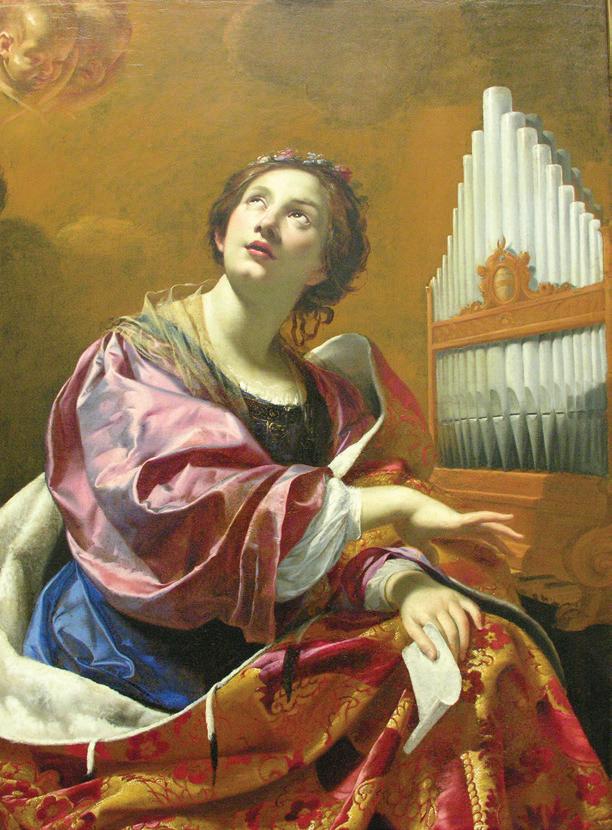
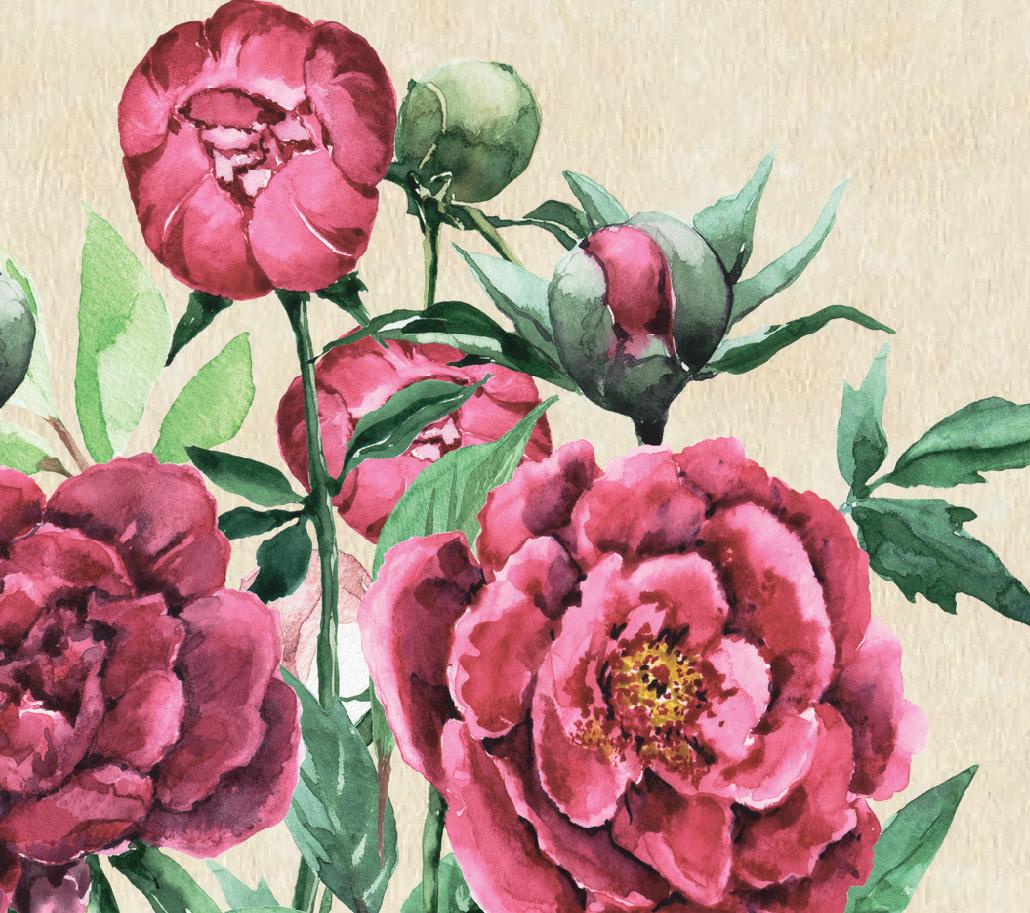




Saint Cecilia, a 2nd–3rd century Roman martyr, is the patron saint of music and musicians. According to tradition, she was a noblewoman who took a vow of chastity but was forced into marriage. She converted her husband and brother-in-law to Christianity, both of whom were later executed. Cecilia was also arrested and martyred for her faith, surviving several execution attempts before dying. Throughout her ordeal, she was said to have sung to God in her heart, inspiring her association with music. Her feast day is celebrated on November 22, and she remains a symbol of faith, purity, and artistic inspiration.



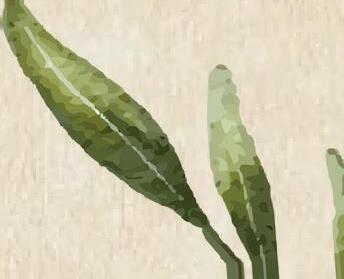



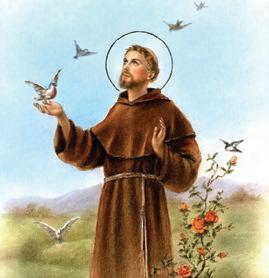

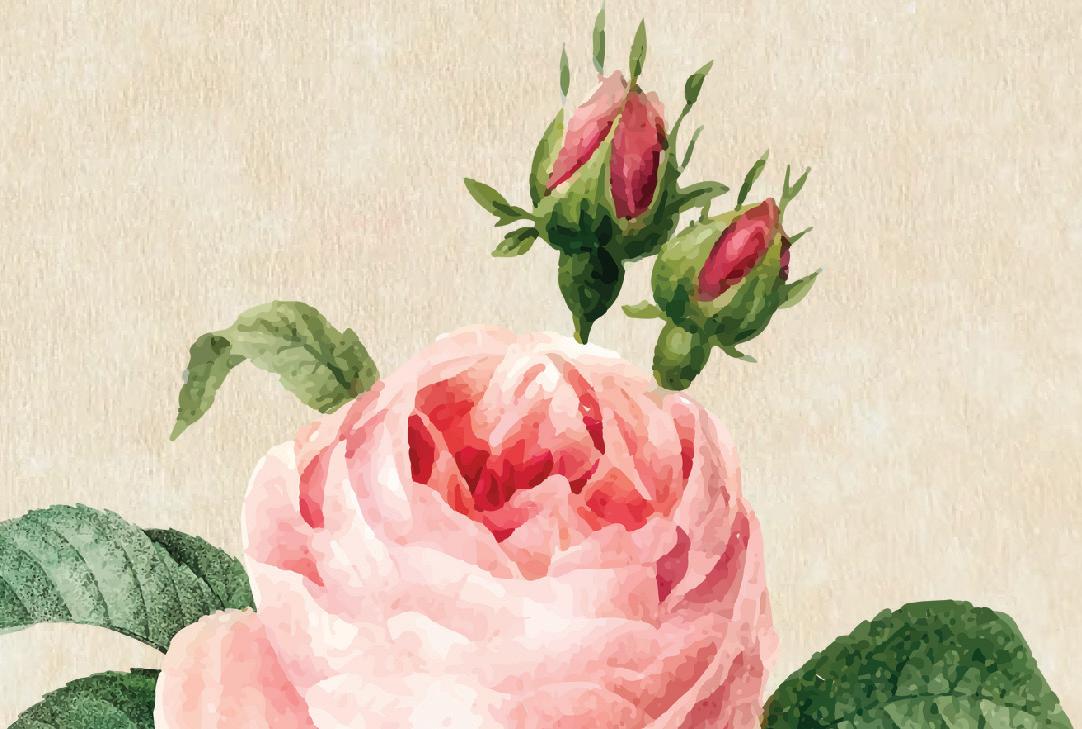




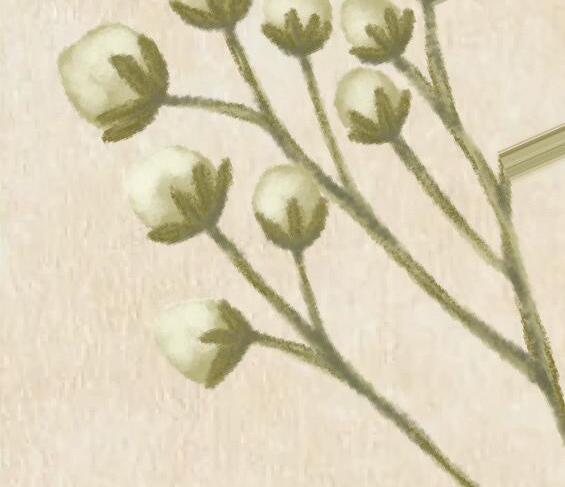


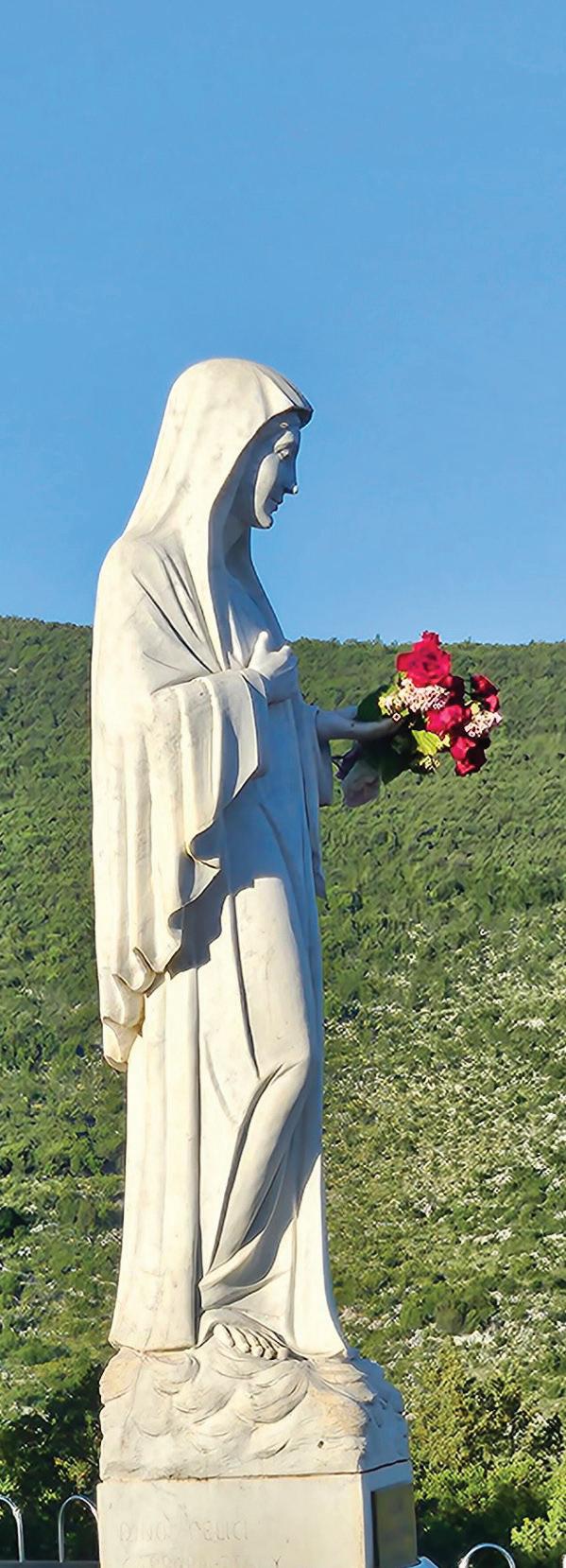
Jubilee
I never dreamt I would be blessed with a pilgrimage this Jubilee year, let alone one on the other side of the earth. Medjugorje received its Nihil Obstat status in 2024, a declaration Archbishop Aldo Cavalli (the Apostolic Visitor) powerfully interprets as a resounding ‘Go!’ Article after article, book after book, podcast after podcast, opinion after opinion often clouds that decision for many. In May, I soon learned—none of that truly matters—Our Lady invites you to Medjugorje for one reason only: to lead you closer to her Son, in the way He already has planned for you.
KIRSTY MUIR
It was like a scene taken straight out of a movie: I sat on the tarmac of Frankfurt airport, the pitch-black night sky
brightened only by runway lights guiding me home. Tears streamed down my face as Brandon Lake’s “Gratitude” played, its lyrics echoing my soul: “All my words fall short, I got nothing new. How could I express, All my gratitude?” I was returning home and certainly couldn’t wait to see my children, and I was eager to share my experiences. Yet still there was the quiet dissonance in the expected joy - the reluctance to leave the sacred space I had found.
Though educated in Catholic schools until Form 4, I don’t recall learning about Marian apparition sites. This was new as I returned to faith as a young adult. Lourdes and Fatima were familiar, but “Medjugorje”—I stumbled on even its pronunciation. That changed in 2024 when Patricia Parsons from MIR gifted me a small, unassuming keepsake from her trip. My interest bloomed—a seed planted, I believe, by Our Lady’s ‘plan.’ Through her, I was personally invited, through an ‘angel,’ to experience Heaven on earth.
Being offered a pilgrimage seemed a spiritual no-brainer, yet I hesitated. A quiet voice, a feeling in my heart, urged: “Surrender and say yes, I will make it easy.” And she truly did. That word, “surrender,” became a summons, calling me to relinquish my tight grip of control and lay it at Her Son’s feet. I noted the parallel to Christ in Gethsemane . Little did I comprehend how deeply this imagery would unfold. (See photo)
Embarking on a pilgrimage was uncharted territory for me.

The Church, in her wisdom, tells us that “pilgrimages evoke our earthly journey toward heaven and are traditionally very special occasions for renewal in prayer”. (CCC2691) This understanding deepened as MIR pilgrimages promised and delivered “Medjugorje in Depth.” This meant, through our local guide who was with us every day, full immersion into the history, beauty, troubles, and Sacraments every single day. From the radio station broadcasting Masses and translations of evening prayers to the top of Križevac, 320 meters above town where you could still hear church bells ringing, we walked, we prayed, and breathed it all in.
Our first full day, a Saturday, was orientation. My gaze fell upon St. James Church’s twin bell towers, a sight familiar from Google searches, now standing tall before me. Built before the Apparitions, it endured the Bosnian war, was named after the patron saint of pilgrims, and constructed on a scale far grander than the local parish needed—a detail for you to ponder.
English Mass began at 10 AM, this followed German Mass, Polish prior to that - a well-oiled symphony of Masses in native tongues, a testament to this sacred place’s global reach. Fr. Leon Pereira’s opening sermons, like all profound truths, struck my soul with lightning force. No sugar-coating, just challenging truths. Then we met our local guide, Maria—coincidentally, like me, born the same year as the first apparition. Maria’s knowledge was

incredible, her insights poignant from growing up through the Bosnian war. As we walked, she spoke, and I made countless mental notes of places to revisit in what I thought might be ‘freetime.’

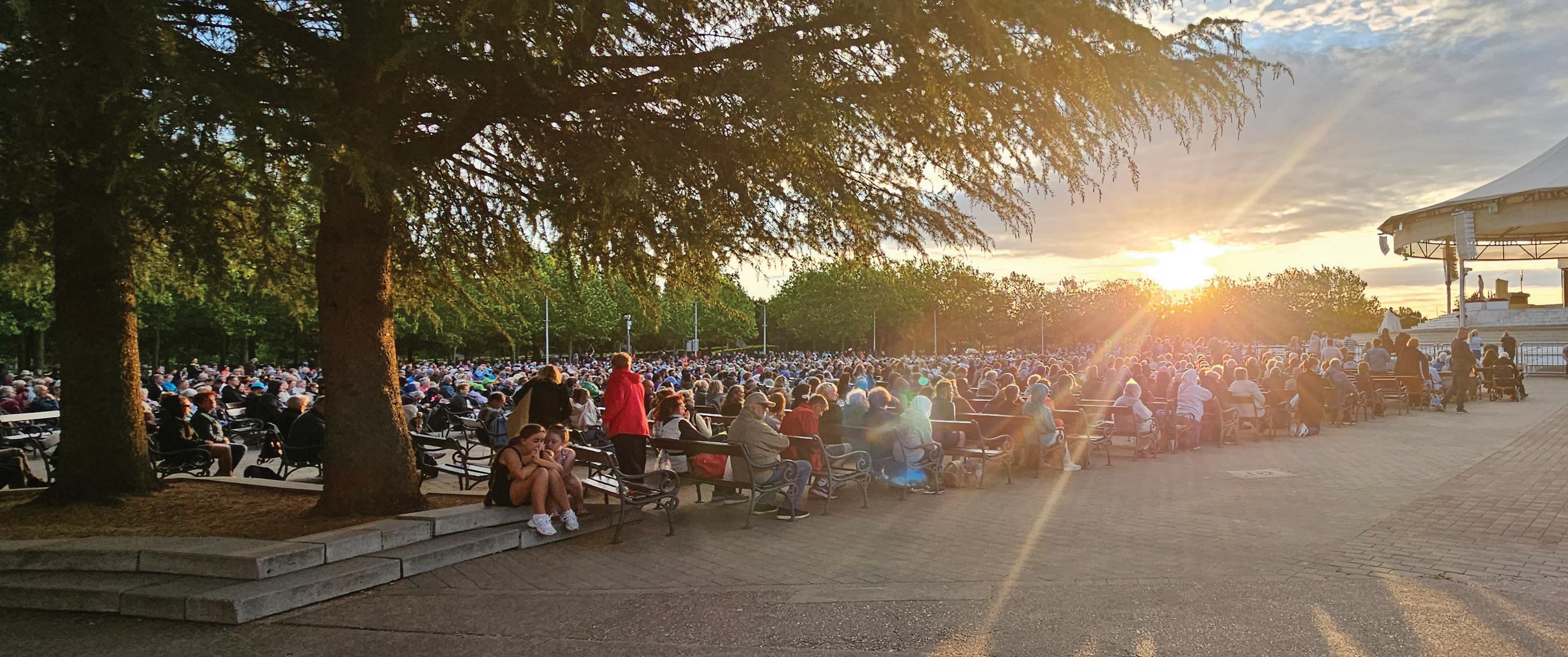
‘Freetime’ didn’t really exist; time itself seemed fluid, yet we still had every experience you could imagine and endless hours in deep prayer. The veil between heaven and earth felt notably thin—almost as if one could step easily back and forth. Our brains filled with facts, our souls nourished every minute. The evening prayer program alone was three hours some nights: Rosary and prayer, Croatian Mass, followed by either Adoration, another Rosary mystery, or the Way of the Cross. I’d already learned from morning Mass that communion had no orderly lines; priests and deacons came out to the people. Witnessing this at the outdoor Croatian Mass was akin to the Feeding of the 5,000: priests like the apostles came out to the crowds, fed us - at least 5000 of us, and returned to the Altar, to Jesus.
One of the most striking testaments was the lines for confession. Day after day, penitents from every corner of the globe patiently waited for a priest who spoke their

language. Priests lined the outside of the Church walls, sitting and listening for hours, the queues of hearts yearning for God’s mercy and forgiveness long. I had heard about these life changing confessions - one I would experience myself.
Our group stayed in a pansion, hosted by a Visionary’s family (and they treated us like their own family), at Apparition Hill’s base. Every day we walked into town, sometimes even two or three times. Two kilometers of meadows and vineyards, the crunch of gravel under our feet only quieted by the sound of the Rosary being prayed—our group in English, passing another in Italian. You might hear the church bells ring out at midday from anywhere, prompting you to stop and pray the Angelus. Our own personal pilgrimage, communal prayer, a shared journey of faith.
On our last day, we returned to the Oasis of Peace Community, where we’d previously heard Fr. Robert Reiger, a Kiwi priest, speak. This Mass wasn’t scheduled, but it was in God’s plan for us. It was the closing of our pilgrimage, making it back mere minutes before our bus to the airport. During this Mass I wasn’t sure if I was still in Medjugorje, or if I was in heaven. As it was the Monday before Pentecost Sunday, Fr. Robert prayed over us, I don’t remember what language it was even in, given the homily had been a graceful mix of Italian and English. Heaven came down or I went up - I am not sure but I know it was hard to return and exit the pew. Yet, like the disciples on the road to Emmaus, whose hearts burned within them after encountering the Risen Lord, those were the tears that transcended on the tarmac and promised a deeper, more enduring joy to share with all people I encounter.
To be gifted this pilgrimage was, indeed, life-changing. Before this journey, I might have dismissed the phrase “you don’t come back the same person” as an exaggeration or ‘airy-fairy’ sentiment. Yet, God, in His wisdom, often
humbles us, and I can honestly say there is a distinct ‘before Medjugorje’ and ‘after Medjugorje’ in my life. My soul has been touched in a way that, much like the lyrics of Gratitude,”all my words fall short” can not be described; it is a feeling deep inside. The word ‘surrender’ continues to echo, a constant reminder of what I was called to do, and what I found myself doing repeatedly throughout the pilgrimage. While I experienced multiple miracles, too numerous to recount here, the greatest came in the Sacrament of Reconciliation with an Irish priest. Only now have I awakened to the ‘coincidence’ of being told after this, “Go, you are free,” in a Jubilee Year. While not in a physical sense, the figurative ‘brain fog’ of being stuck and the ‘weight’ on my shoulders? Truly gone. This freedom, a gift of the Jubilee, is the lasting fruit of Medjugorje.
My pilgrimage was captured and summed up perfectly by this image taken in the Chapel—Our Lady pointing the way to her Son—which revealed the heart of her invitation. She calls us to fall more deeply in love with Him and to know Him, as our Bishop’s motto so beautifully articulates, “May I know You more clearly, Love You more dearly, Follow You more nearly, day by day.”
Our Lady Queen of Peace, Pray for Us. Gospa Kraljica Mira, moli za nas.
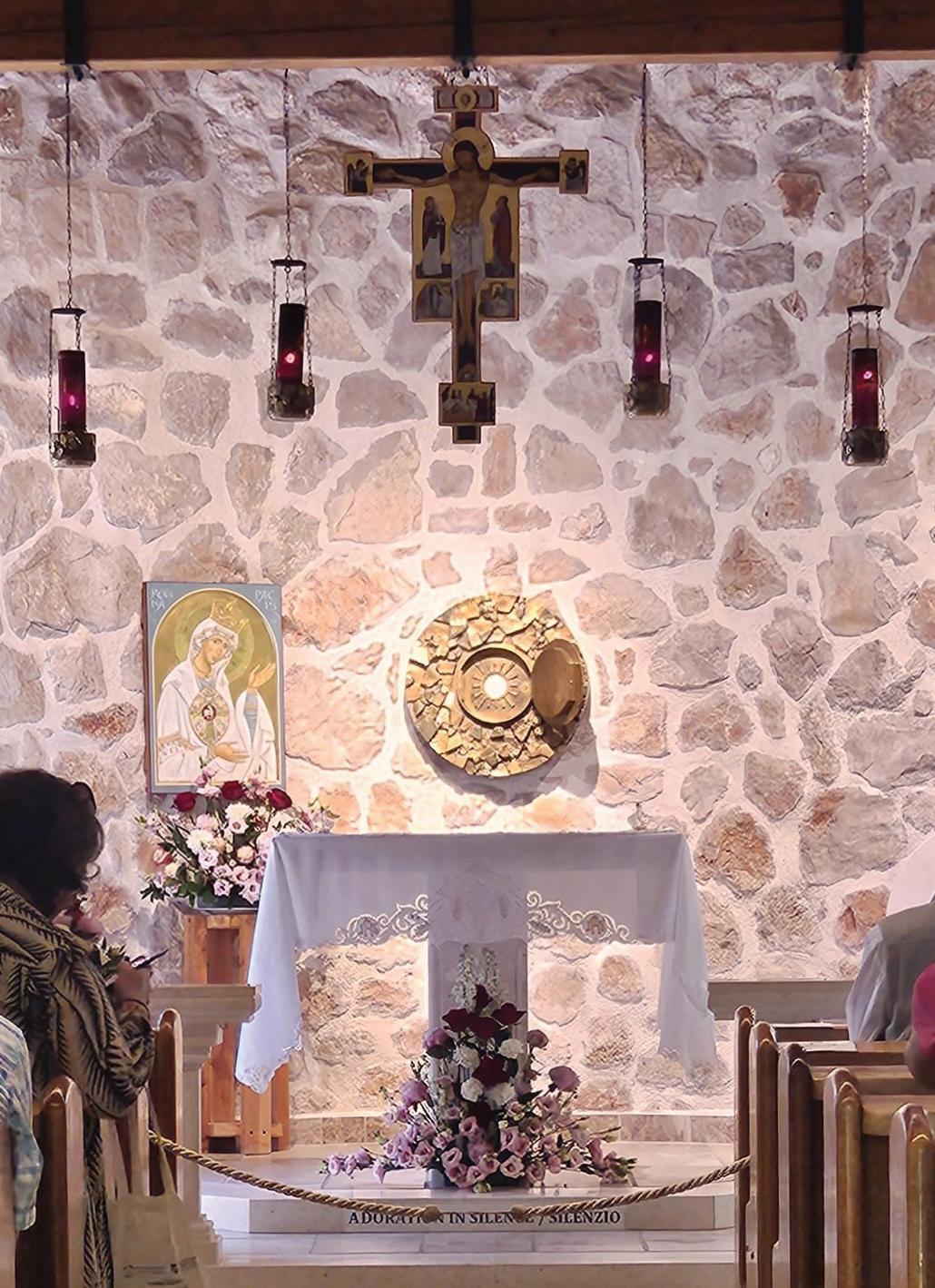
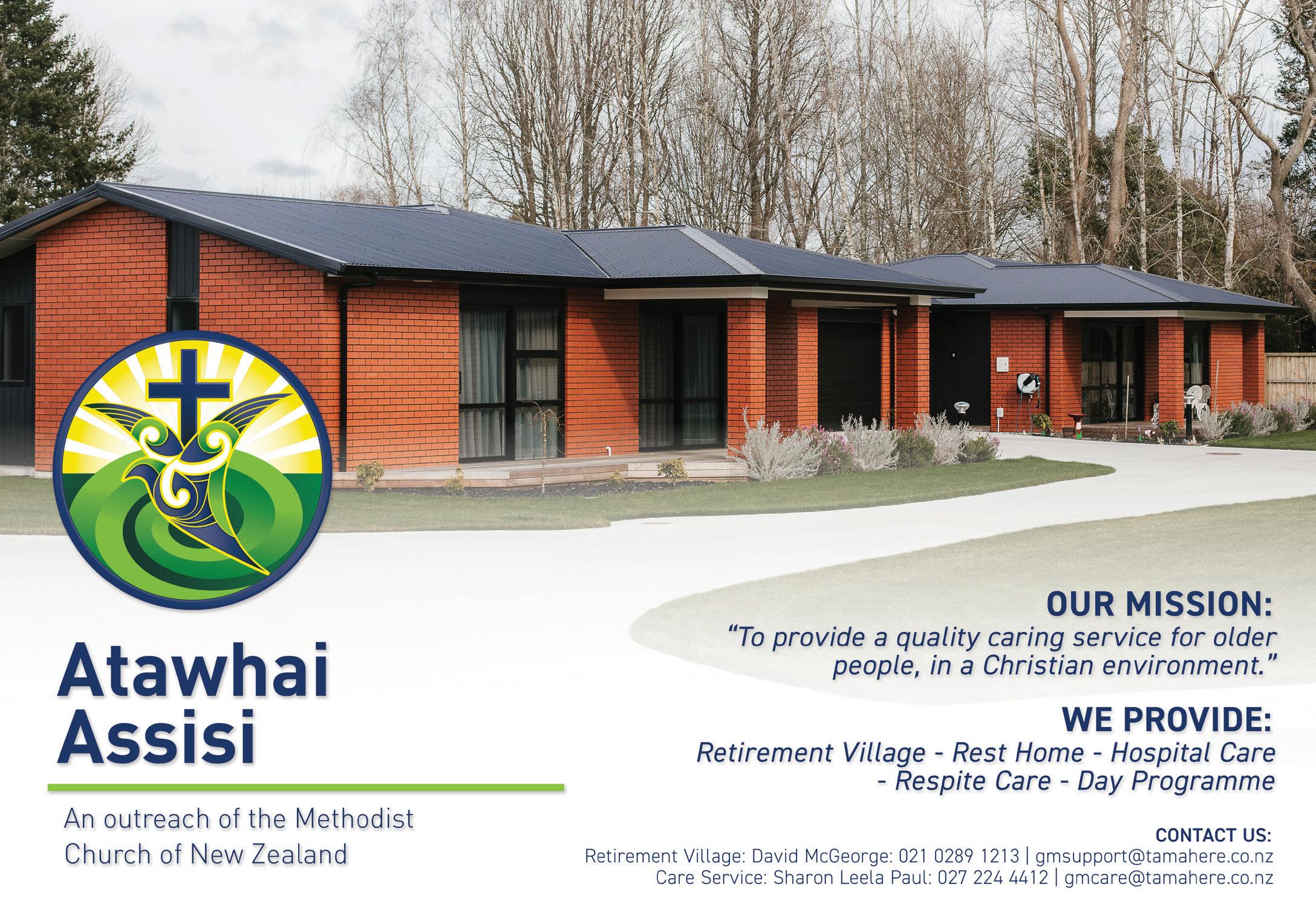
All the demands of work, school, countless afterschool activities and weekend sport can lead to the phrase, ‘focus on the family,’ becoming just a distant echo amidst the chaos. Just one reason for your family to come to family weekend! This year, we are so excited to invite you to a special family weekend designed to help us all reset, have loads of fun, spend quality time with family and friends, and most importantly, spend time with Christ – who truly is the heart and centre of our families.
Our theme for the weekend, “Here Am I, Send Me!”
(based on Isaiah 6:8), is such a powerful call to a deeper understanding of our mission within our families and in the world. It’s truly an invitation to respond to God’s call with open hearts, ready to serve and love.
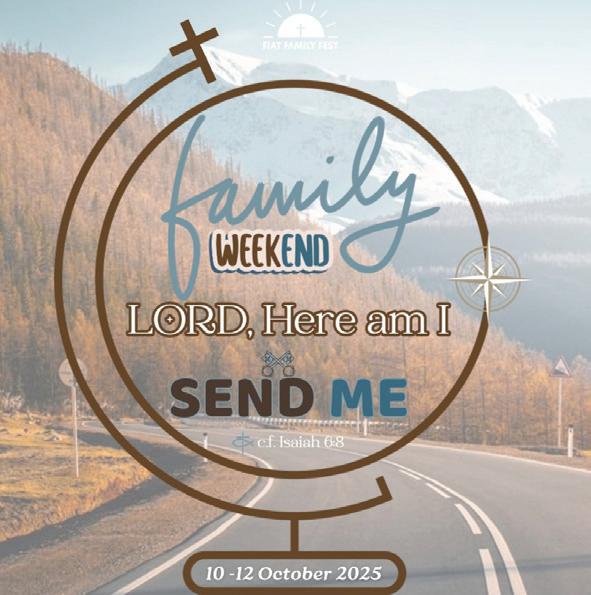
As we journey through this Jubilee Year of Hope, this family weekend offers an opportunity to reflect on what it
means for our families to truly live out hope and actively participate in God’s plan. ‘Here I am,’ resonates deeply with the spirit of this Jubilee, inviting each of us, and our families as a whole, to discern and embrace the path God sets before us.
This weekend will be a time to consider how our families can collectively say ‘yes’ to God’s will. This includes nurturing not just an openness to future vocations, whether to marriage, priesthood or consecrated life, but also to our life of service right now, even just being involved in ministries in our parishes. By centering Christ in our homes, we create a fertile ground for our children to hear and respond to God’s call in their lives, preparing them to confidently say, “Here I am, send me!” when their time comes.
From the Friday night to our final lunch together on Sunday, we will be eating together, praying together, listening together, and having fun together, helping to make those core memories for our children. Whether this is your first time joining us or you have never missed a weekend, this event is absolutely for your family. Come and discover how to say “Here I Am, Send Me!” to God’s loving plan for your family, especially as we celebrate this Jubilee Year of Hope. We really look forward to welcoming you!
Quickest way to register is to head to: www.cdh.org.nz/family-weekend-2025
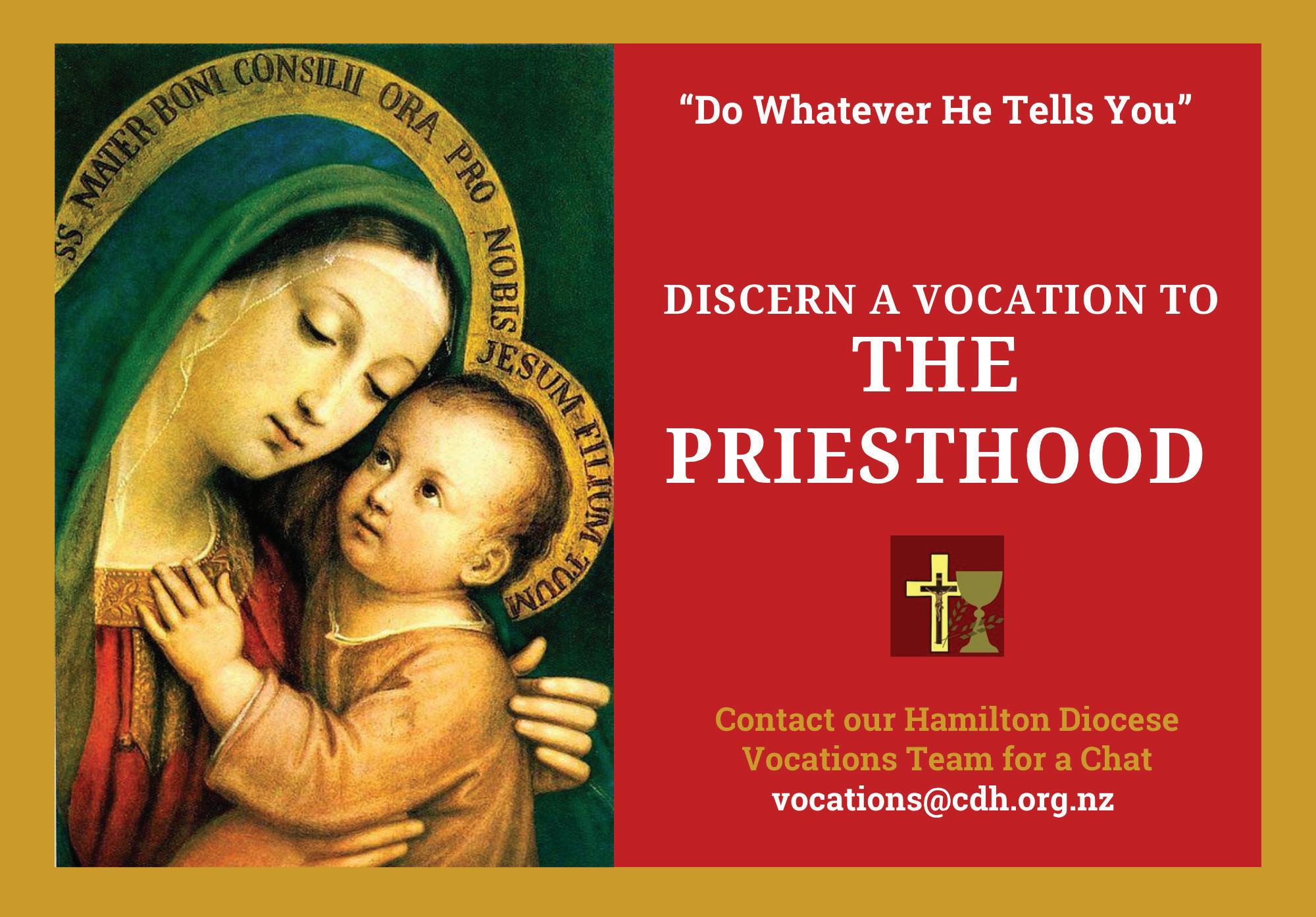
Alison Caroll is a parishioner of Tongirio Catholic and Faith Formation Manager for the diocese. Alison has always been actively involved in faith formation in her parish and is passionate about meeting people where they are. Here she shares how having a conversation at the local cafe helped to brew a family’s faith.
Straight from a day on the building site, six-foot-two with a bushy beard and tattoos, Luke was easy to
spot when we met at a local café in March 2023. He had called the parish wanting to become Catholic. Over coffee, he shared about his atheist upbringing and his background in philosophy and finance. He was wrestling with big questions—and the answers were leading him to the Catholic faith.
Over the following year, Luke explored faith through Alpha, where he experienced healing and a powerful encounter with Jesus. He prepared for Baptism, Confirmation, and Eucharist through RCIA. As Easter drew near, I met Luke’s wife, Sarah. Her first question was, “When does the next RCIA start?” She wanted in too.
Today, Luke and Sarah, and their daughters, Ruby and Eva, have all been baptised and are active in our parish life. They help with Alpha and sacramental prep—and already, neighbours and family members are exploring faith through their witness.

As Catholics, we know we have Good News to share. But often we don’t know where to start. That’s why it’s vital for parishes to have clear, accessible pathways for people to explore faith. It starts with connection, have the
conversations - don’t let the opportunity be missed. Then comes the personal invitation— someone who listens, welcomes, and genuinely cares. From there, people need a safe space to ask questions, explore, and encounter Jesus. That’s where Alpha (or a similar evangelising tool) is so valuable. Alpha introduces the

basics of Christianity in a friendly, open environment, grounded in the Kerygma—the core message that Jesus loves you, gave His life to save you, and is with you today to strengthen and free you (Pope Francis).
This evangelising step is actually the beginning of RCIA—
a journey not just of learning, but of invitation, response, and transformation.
Involvement with RCIA, Sacramental Preparation or other faith formation in parishes is such a beautiful ministry. One that nourishes and grows others while deepening and enlivening our own faith at the same time. It was an incredible privilege to be part of Luke and Sarah’s journey to faith in Jesus through His church. My life and faith are richer for having walked alongside them.
If you’re involved in RCIA, Sacramental Prep, or any faith formation, join us for “Teachers to Witnesses” on Saturday 23 August at St Michael’s, Rotorua. Clergy, catechists, and formation teams from across the diocese will gather to be renewed and equipped to go and make disciples. Come and be part of it!
Email alisonc@cdh.org.nz to register.
www.cdh.org.nz/becoming-catholic
The Ministry of Health is responsible for the administration of the The End of Life Choice Act. The Act requires the Registrar (assisted dying) to report to the Minister of Health about the operation of the service by 30 June each year. The figures for the year end March 2025 showed 472 people died by using assisted dying - a significant 37.2% increase from the previous year. That brings the total number in New Zealand who used assisted dying to 1210.
In addition to the annual report, an initial review took place after three years, with another review (which includes public opinion submissions) not due to take place for five years. Richard Turnbull shares his reflection on this.
RICHARD TURNBULL
The End of Choice Act came into force on the 7th of November 2021, following a referendum held
alongside the 2020 General Election. The referendum showed 65% of people were in favour.
The Act laid down important eligibility criteria such as a restriction of eligibility to those 18 and over, suffering deemed unbearable, and a prognostication of less than six months to live.
The process for assessing eligibility is first, the patient’s request, followed by the assessment of two doctors and, if it is a mental condition, that of a psychiatrist; a date and time is selected and the medication for ending the patient’s life is agreed upon.
This Act published the results of its first, 3-year, review late in 2024. The next review will be in five years’ time. For the time period covered by the review (7/11/21 – 30/9/24,

a little under three years) there were 2,482 applications and 978 deaths. Many had died from their illness before their applications had been decided, or had failed to meet the eligibility criteria. The numbers of applicants have shown a steady increase. The review highlighted the problem of having a time frame because many doctors pointed out that it was almost impossible to predict how many months a patient had left. Then there was the criterion for “unbearable suffering.” How could it be defined? How is it measured? As a proportion of all deaths those caused by End of Choice were 0.8% of the total.
It is sometimes helpful to look overseas at countries like Canada, Belgium and the Netherlands, which have lived with such legislation for longer than NZ. In the case of the Netherlands, since 2002. There, the age limit on eligibility (18 and over in NZ) has been dropped to twelve years, with parental consultation required to age 16, and also with parental consultation, for babies up to a year old; and includes the mentally ill (psychiatric deaths). In the period 2023 to 2024 psychiatric deaths rose by 59% to 219. The proportion of deaths from euthanasia is 5.1% of the population (0.8% in NZ). In 2014 Belgium removed the age restriction altogether.
Christian organisations and those representing the physically and mentally disabled, are deeply worried about legislation on euthanasia. They point out that to divert resources to euthanasia and assisted dying is to divert them away from palliative care and that thanks to advances in medicine there are very few cases where suffering is unbearable.
But at a deeper level, they argue that such legislation shifts the emphasis from the inherent and inviolable dignity of each person to a utilitarian philosophy in which a person’s worth is a function of their usefulness, or ableism. They point

to the vulnerability of the disabled, depressed, lonely and unsupported and of the need to offer palliative care and wraparound support.
The Christian Medical Fellowship (a network of Christian doctors and medical students) warned: “Any broadening of eligibility will exacerbate the risks to people who feel that they are a burden…an ableist, functionalist view.” The Disabled Persons Assembly New Zealand (DPA) warned that any expansion in the eligibility criteria would “see disabled people opting to end their lives through assisted dying simply because they cannot access the support they need to be included in their community. We are hearing that some disabled people may feel that they must end their lives this way due to implicit societal messaging that we are a ‘burden’ both to the state and our communities.”
An article, broadly sympathetic to euthanasia, in the NLM (National Library of Medicine) titled ‘Two Decades of Research on Euthanasia from the Netherlands, what have we learnt and what questions remain?’ refers in passing to the controversial nature of the subject and the heated
Join Father Shenan J. Boquet, President of Human Life International, for a powerful and timely series of events that will inspire and equip you to defend life and family in today’s world.

debates it often gives rise to. Of these it observes: “Many of these debates are based on personal and moral views, whereas actual facts rooted in empirical research will contribute to a more enlightened debate.”
This sentence reveals a great deal about the thinking of those who support euthanasia (and, for that matter, abortion); it sets apart the personal and moral on the one hand, from the factual and empirical on the other. The first, it implies, is inferior because morals are just a matter of personal opinion and no one should impose their morals on others; but the latter is superior, because facts and scientific research are objectively true and therefore do not admit debate. This sentence gives expression to what has become a huge part of our culture, namely the idea that freedom of choice is the supreme good and that ‘I’ am the creator of my own freedom by making all my own decisions and owing nothing to society. It is man centred rather than God centred. It has ceased to believe in the natural law (that law of basic right and wrong with which we are all born) because this law imposes restrictions and responsibilities upon autonomy.
A theocentric view of the world tells us that we belong to God: everything, our lives and our deaths. A man centred view leads to chaos where we see, revealed in legislation like that on euthanasia, ‘darkness visible’.

SARAH COX
he 7th of April 2025 marked the Opening and Blessing of our School House for Sophia Schola. We
have been gathering to learn together since the beginning of 2024 so the culmination of this work and the building of our School House was a joyous occasion. With the support of the Catholic Discipleship College Trust we were able to build a school house for our students as we strive to provide a classical education for them, to nurture and form the soul towards its ultimate goal of heaven. We are extremely grateful to all who have prayed, encouraged us and to the members of the CDC Trust and our other generous donors.
Monsignor Joe Stack kindly blessed the building and all of us present. He spoke words of encouragement to us all and has been generous in his support. May he rest in peace.
From his prayer of blessing:
May our discipuli grow in wisdom, age and grace before you, O God, and all your people.
May Schola Sophia always be a home of truth and wisdom, of faith and good will towards all.
Through the prayers of Our Lady Seat of Wisdom, Saint Scholastica and Saint Benedict, and our own patron saints, may Schola Sophia be an inspiration and joy in the lives of us all and our wider community, and help build your kingdom of justice, love and peace.
May Jesus, the patient gardener and farmer, work the soil of our lives with care and patience, that the work of sowing seeds of knowledge that is begun here, may confidently continue under the guidance and inspiration of your Holy Spirit, and be brought to a fulfilment giving glory to God our Almighty Father, who lives and reigns forever and ever. Amen.

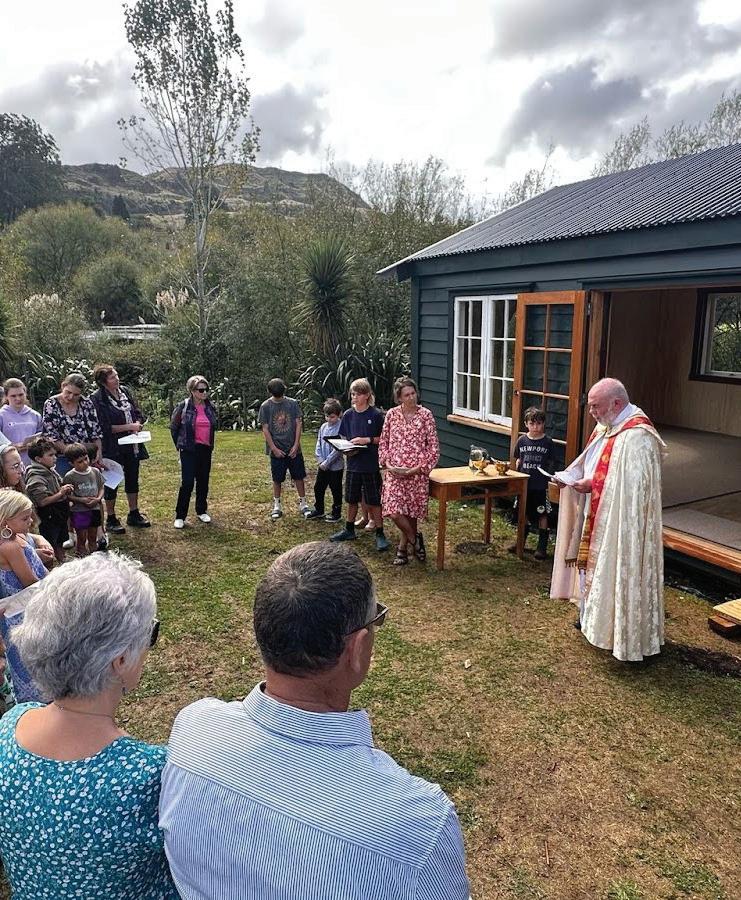
BY VALENTINA (Student)
Sophia Schola to me is like a dream come true. ‘Sophia Schola’ means ‘Wisdom School’ in Latin. It’s like a mini school for homeschoolers where we learn lots of cool stuff. There’s music, art, catechism, virtues, writing, and rhetoric, but my favourite topics are history and poetry. When learning history we listen to a chapter while doing the activities in the activity book for that chapter, and on the next day we do a project on it. For poetry, our teacher, Sarah Cox, gives us lovely poems to memorize, usually written by some well-known poet like R. L. Stevenson or Robert Frost. Sometimes she lets us choose a poem ourselves to memorize from a selection of certain poems. Also there’s the schoolhouse. Who would imagine that from a few chunks of wood in the ground our charming little schoolhouse would be built upon? There’s an exquisite round hobbit window at one end, taking up the whole wall. Through it you can see tall, green peaks that seem to reach the heavens that are sprinkled all over with trees. On the wall perpendicular to it is a smallish window from which you can catch a glimpse of the murmuring creek, rushing along as if in a hurry. Beside that there is a huge painting of Jesus, the Good Shepherd, holding a lamb tenderly in his kind arms, that occupies the wall from top to bottom. Next to it is a bookshelf of classic books, chapter and picture books alike and close to it is a comfy armchair and the sidetable. There is also a small couch with pretty flowers painted on it that sits in front of the french doors. What I like most, however, apart from the hobbit window, is the soft sheep-wool carpet that makes one’s feet feel nice and cozy from the moment one’s feet touch it. And what makes it even better is that the warm afternoon sun shines down through the hobbit window onto the fine carpet and causes it to be even more pleasant and snug. Of course, Sophia Schola isn’t just the building or study. It’s the community too. I’ve made plenty of friends at and through Sophia Schola. It is a lively opportunity to practice the Catholic faith and virtues, helping and caring for others. I’m really grateful for Sophia Schola, everything that it has done for me and all the wisdom shared.


Education for the formation of the soul
A classical approach for children aged 6-12


The Season of Creation is an annual ecumenical initiative which begins with a Day of Prayer for Creation (September 1st) and concludes on the Feast of St. Francis of Assisi (October 4th). This period is dedicated to fostering a concrete commitment to care for our common home.
Seeds of Peace and Hope.
This theme for the tenth World Day of Prayer for
Creation, as Pope Leo said in his Papal message, was chosen by “our beloved Pope Francis.” His holiness went on to say that these words will accompany us through the season, reminding us that prayer, determination, and concrete actions are necessary to make God’s “caress” visible in our world. Our Pope highlighted the prophet Isaiah’s words, contrasting justice and law with the desolation of the desert, noting the contemporary evidence of the earth being ravaged by injustice, violations of international law, grave inequalities, and greed. These issues lead to deforestation, pollution, loss of biodiversity, and extreme natural phenomena caused by humanprovoked climate change. He also points out the human and ecological devastation wrought by armed conflicts, such as landmines in agricultural areas, “scorched earth” policies, and conflicts over water sources. Destruction of nature disproportionately affects the poor, marginalised, and excluded, with indigenous communities suffering emblematically. He lamented that nature is often reduced to a bargaining chip for economic or political gain, turning God’s creation into a battleground for vital resources.
Drawing on Jesus’ use of the seed image to proclaim the Kingdom of God, Pope Leo states that in Christ, “we too are seeds, and indeed, ‘seeds of peace and hope.’” He reiterates Isaiah’s prophecy that the Spirit of God can transform an arid desert into a garden of peace and serenity, where justice and righteousness will dwell forever.
God entrusted creation to man and woman who He made in his image and likeness. This message serves to remind us of our moral obligation to protect the planet and ensure a safe environment for future generations. On the tenth anniversary of Laudato Si, the Holy Father promulgated the Decree for the Mass of the Care of
Creation, the new formulary for the Roman Missal is included in Masses for ‘Various Needs and Occasions.’ Pope Leo celebrated the first Mass for the Care of Creation at the Laudato Si’ Village in Castel Gandolfo, urging Christians to embrace their mission to bring peace and reconciliation to the world and all creation. We leave you with the opening section from the encyclical Laudato Si, which Pope Francis penned ten years ago. As Pope Leo said “For ten years, the encyclical Laudato Si’ has accompanied the Catholic Church and many people of goodwill : may it continue to inspire us, and may integral ecology increasingly be chosen and shared as the path to follow. In this way, the seeds of hope will multiply, to be ‘guarded and cultivated’ through the grace of our great and unfailing Hope, the Risen Christ.”
“LAUDATO SI’, mi’ Signore” – “Praise be to you, my Lord”. In the words of this beautiful canticle, Saint Francis of Assisi reminds us that our common home is like a sister with whom we share our life and a beautiful mother who opens her arms to embrace us. “Praise be to you, my Lord, through our Sister, Mother Earth, who sustains and governs us, and who produces various fruit with coloured flowers and herbs”. ~ Laudato Si, Section 1, 2015

SR ANNE SKLENARS, RNDM
The Sisters of Our Lady of the Missions in the third millennium. Today the Congregation perhaps looks
very different from that founded one hundred and fifty years ago in Lyon. Most strikingly obvious at general chapters and other Congregational gatherings is the multicultural nature of the groups with literally all the continents of the world represented.
A second important characteristic is the on-going enthusiasm for new missions. This has led the RNDMs today to be involved with other religious congregations in SSS (Solidarity with South Sudan) to help the people of South Sudan. New foundations have been established recently in Laos, Orissa (India) and Thailand (Ranong), Tanzania and The US.
Our Mission Appeal for 2025 focuses on giving access to basic health care to those in remote areas of Bangladesh, where the Sisters are actively contributing to the Sustainable Development Goals. Our second project is a new mission in Vietnam, where indigenous students can stay in the RNDM hostel and go to the local school. We rely on YOU as Mission Partners, so please give generously. The Mission Sisters have been in the Hamilton Diocese for over 100 years, teaching in the Primary Schools, which continue to this day. Maybe they taught YOU or members of your family. This is your chance to partner with us in the Mission of God.
Thank you for your support.

DONATING TO THE RNDM MISSION APPEAL:
Online Payments:
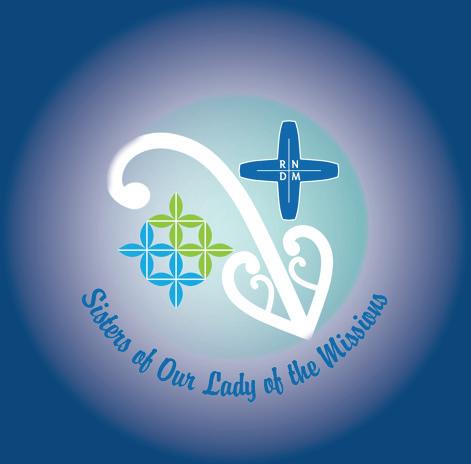
Account Number: 06-0529-0413665-03
Account Name: Sisters of Our Lady of the Missions Particulars: First Name Code: Surname Ref: Phone number
For further information please contact the Province Office office@rndm.org.nz or ph: (+64) 04 939 1231 option 1
Sisters of Our Lady of the Missions MA 2025 PO Box 30-575
Lower Hutt 5040
New Zealand
With grateful thanks for your kind donation.
Charity number: CC 20516

10 ladybugs, 3 cardinals, 5 buzzy bees, and 8 butterflies?

The season of “Creation Time” - Winter’s cold is going, shoo! Spring is coming, fresh and new! God’s big world, so green and grand, is waking up across the land! We thank God for each sunny day. Little flowers, like Saint Thérèse. Both red and blue, popping up for me and you! We’re helpers too, Saint Francis says! Take good care of all things new. And in this lovely springtime bright, we pray to Mary every night. With rosary beads we chant and pray, Our Mother she will always stay, so kind and true, she kindly helps each child like you!
ACROSS:
Who asked Jesus to help at the Wedding at Cana?
Who was the only apostle present at the Crucifixion (5th Sorrowful Mystery)?
How old was Jesus when he was found in the Temple (5th Joyful Mystery)?
What is the 4th Luminous Mystery?: The ________
What is the Mystery said on Thursday?
The ________ Creed, prayed at the beginning of the Rosary?
DOWN:
The 2nd Glorious Mystery is the ________of Jesus?
What is the “Garden” referred to in the 1st Sorrowful Mystery?
What is the Mystery said on Wednesday?
Who does Mary go to visit in the 2nd Joyful Mystery?
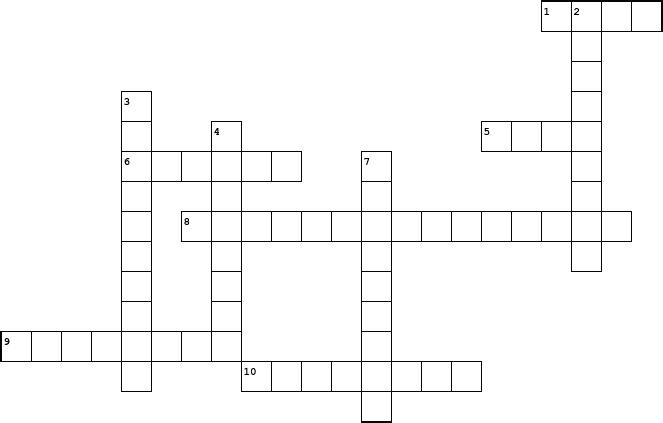
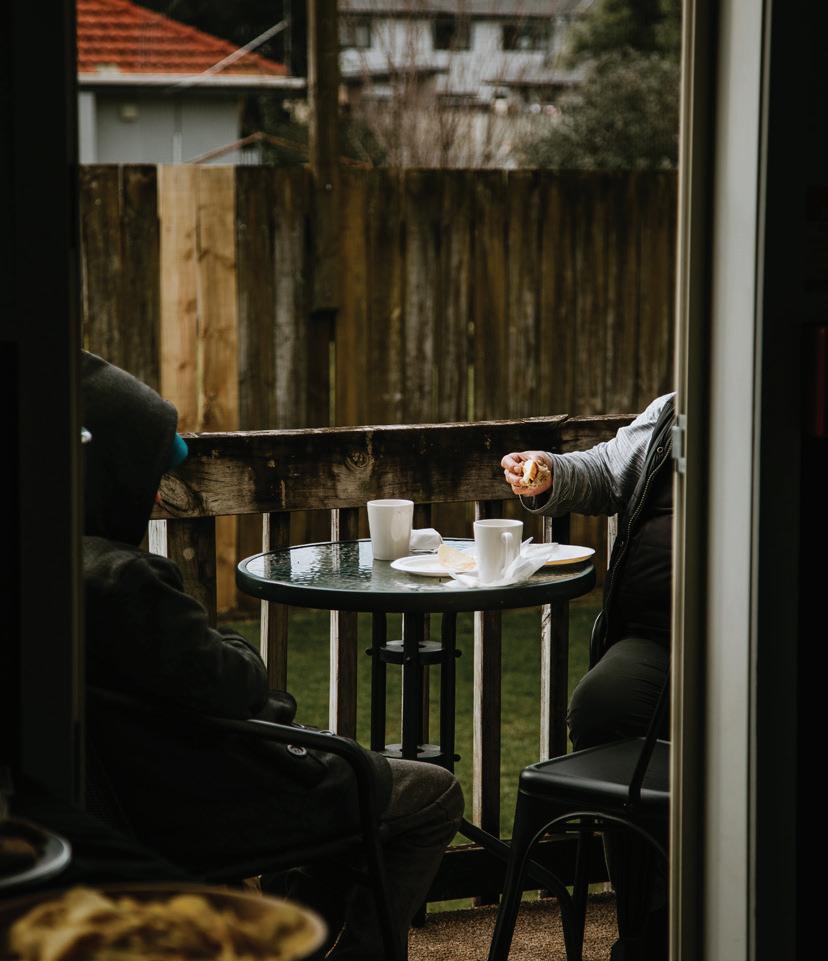



Reflections on Our Annual Community Dinner
JIL YONG
On Saturday 2 August, we hosted our fourth Annual Community Dinner — a day centred on manaakitanga, whanaungatanga, and the simple
but powerful act of making space at the table for everyone. Held at, and in collaboration with, Te Rautini Church in Frankton, the space was opened up to welcome our homeless and vulnerably housed whānau for kai, hot showers, haircuts, laundry, and most importantly, a sense of home.
Over the course of the day, we welcomed around one hundred friends doing it tough in Kirikiriroa. We offered shuttles from the Cathedral, some stayed for the afternoon, others popped in for a coffee or a clean-up. The smell of sausage sizzle coming from the Jubilee BBQ Trailer filled the air as guests arrived. Inside there were books, games, craft tables, karaoke, kai, and plenty of tea and coffee flowing. Young and old, Catholic and Protestant, poor and privileged — all gathered together through the afternoon to connect, kōrero, and share stories.
Our barbers brought more than just haircuts, they offered dignity, conversation, and a listening ear. Orange Sky’s laundry truck ran non-stop. Volunteers served with aroha in the kitchen and café, offering presence and hospitality in every small detail.
The highlight for me, though, came just before dinner. We made an open invitation for a time of waiata, praise, and karakia. A short reflection was shared on the story of Bartimaeus — the blind, homeless beggar who cries out to Jesus from the roadside. What followed was an invitation for personal prayer. Many responded. Some shared their stories. Others simply asked for a quiet blessing. It was simple, but profound. At the end of the day, we had offered physical things, a meal, a haircut, a warm blanket, but this moment was to remind us that the deepest hunger is for Jesus. And in the midst of feeling like we want to be able to do more, we shared our greatest treasure, our Jesus.
In the Gospel of Luke, Jesus says: “I have come to bring good news to the poor.” He spent most of His time with the poor and the outcast. Te Rongo Pai is first and foremost for the poor. They are near and dear to His heart. In that time of prayer, it was our hope to offer not just comfort, but a glimpse into the Heart of the Father —not just for our guests, but for the volunteers too.
That evening, sixty four people sat down for a hot, three-course meal at a table that had been carefully prepared for them. Each taking a seat with a handwritten note and prayer. After dessert, each guest received a toiletry pack and were invited to take what they needed from the winter donations table.
To our volunteers, donors, barbers, drivers, musicians: ngā mihi nui. To our guests, thank you for trusting us with your time, your stories, and your hearts. We hope you left feeling seen, known, and loved.
